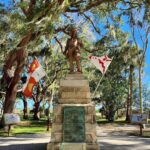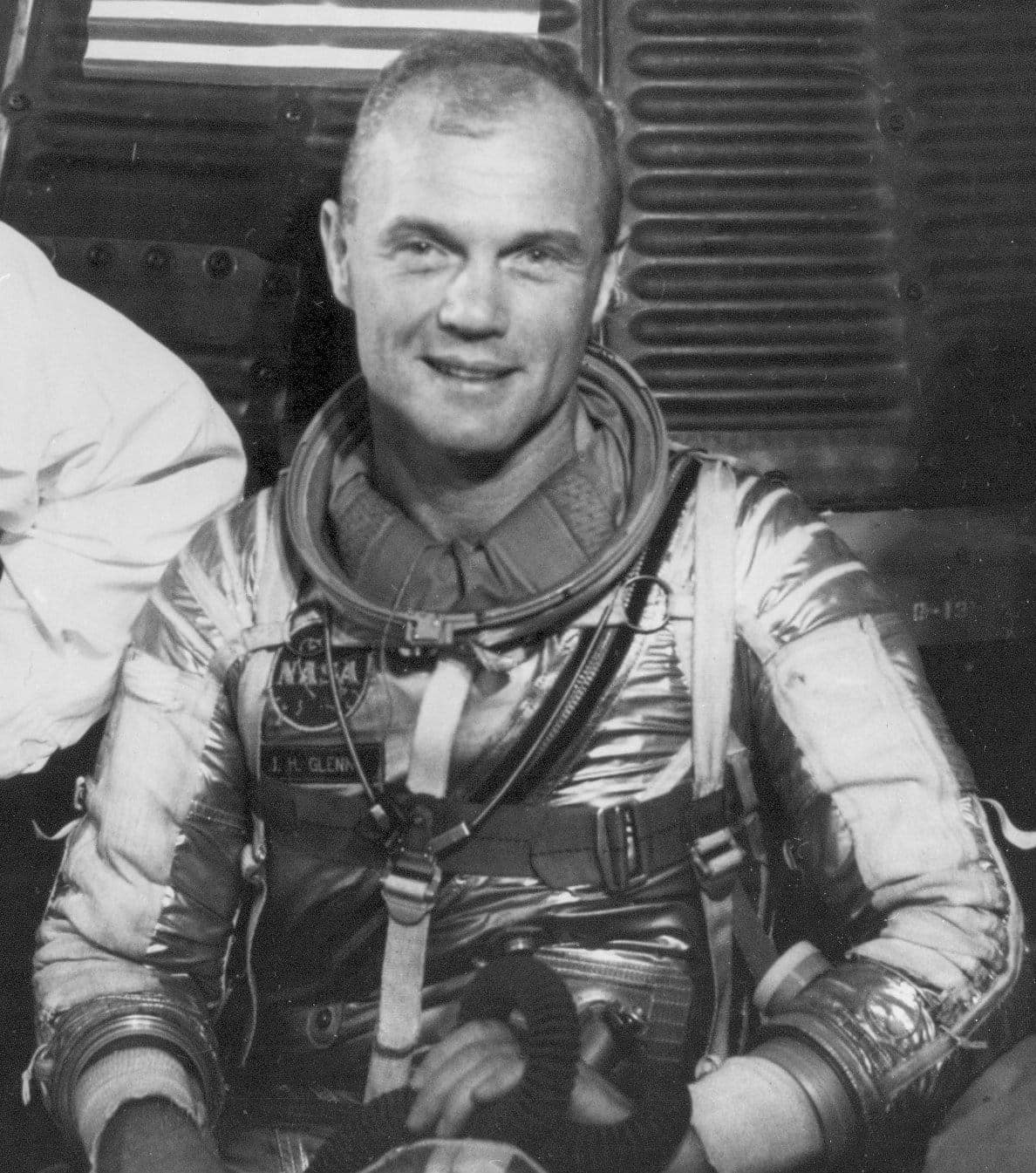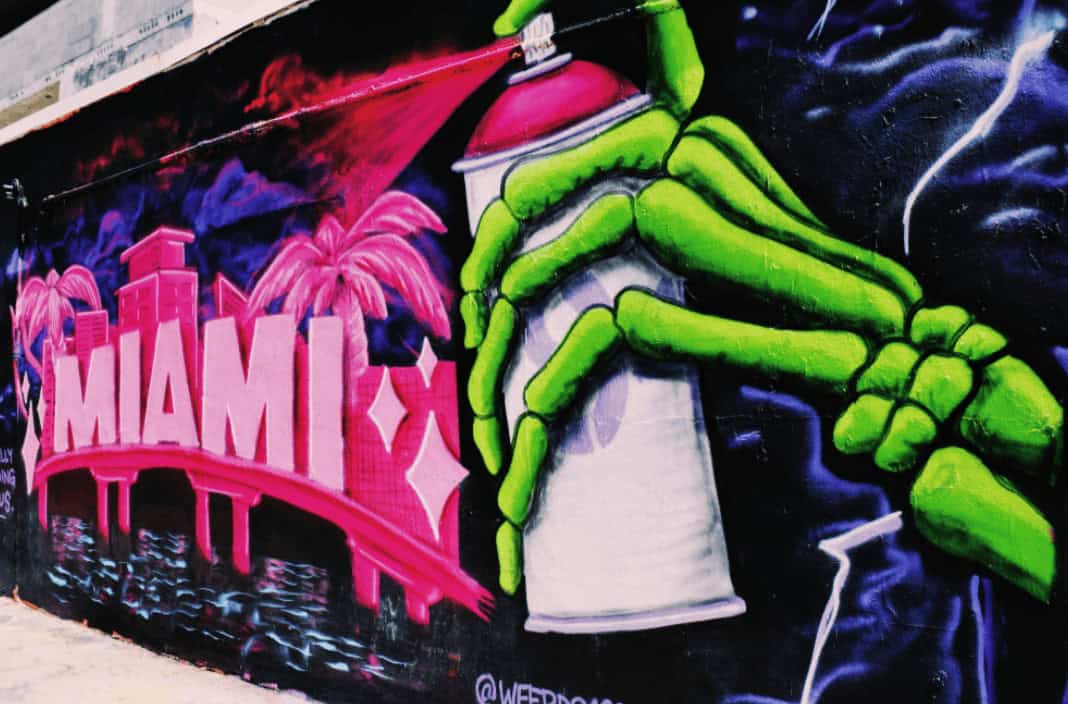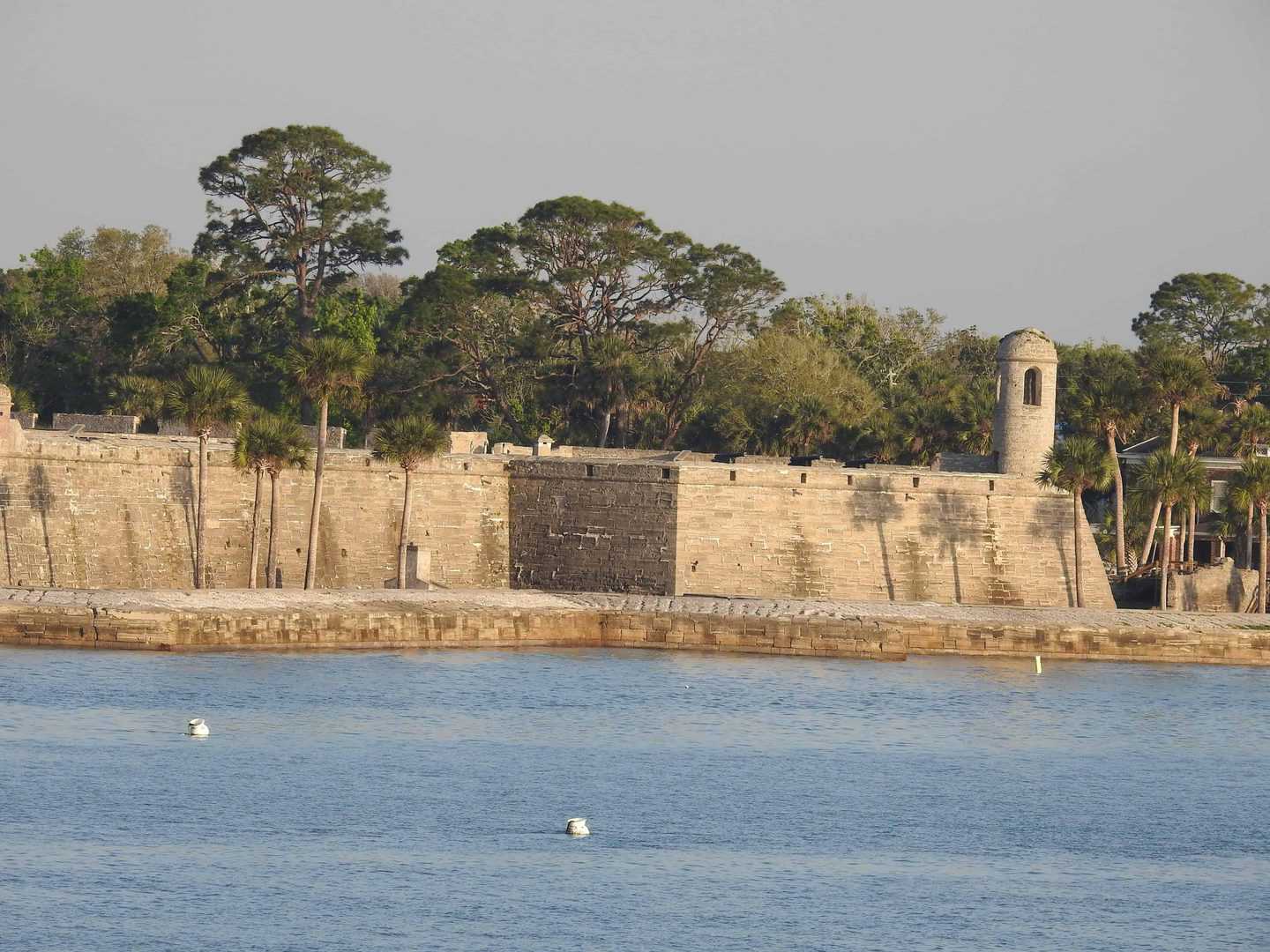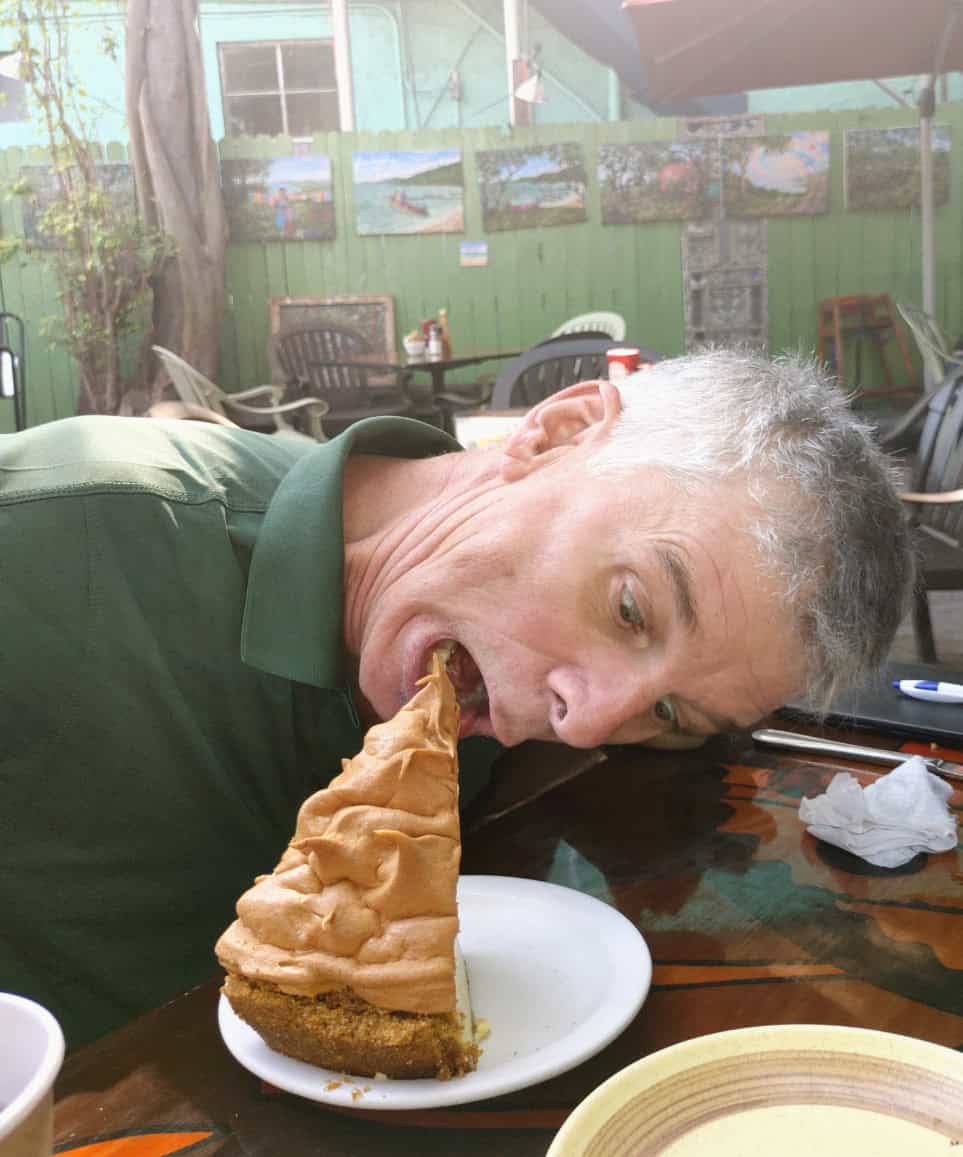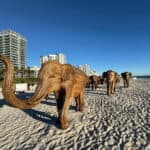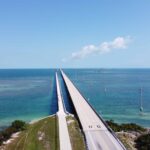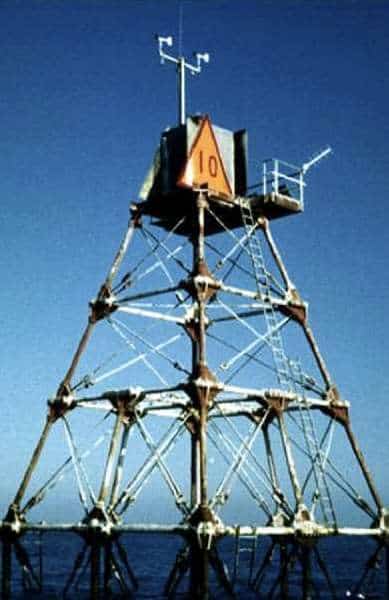The Land of Endless Discovery
Florida
A definitive guide to America’s most misunderstood state
Most people think they know Florida. They picture theme parks and retirees, beaches and strip malls, alligators and hurricanes. What they don’t see is the Florida that exists between the lines – a state of profound contradictions, ancient mysteries, and remarkable resilience. This is a land that has reinvented itself countless times, where Spanish conquistadors once searched for fountains of youth, where a railway baron built his empire in a sparsely populated jungle, and where modern pioneers continue to push boundaries in everything from space exploration to environmental conservation.
Florida isn’t just the nation’s peninsula, it’s America’s laboratory for the future, a place where cultures collide and climate challenges are met head-on. To understand Florida is to understand essential qualities of the American experiment itself.
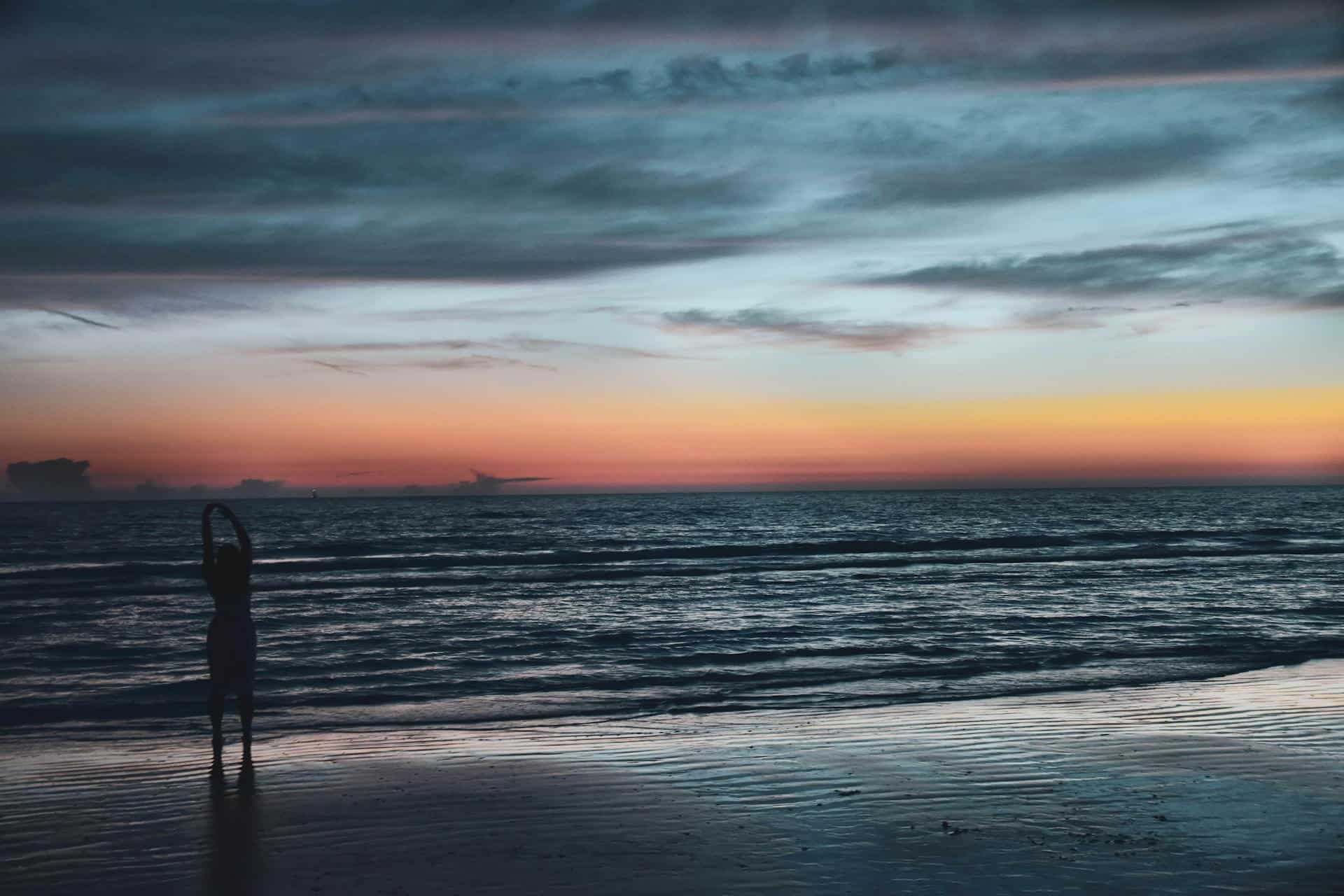
Table of Contents
- Geography & Natural Landscape
- Historical Timeline & Key Events
- Cultural Identity & Regional Character
- Economy & Industry Evolution
- Politics & Governance
- Cities, Towns & Population Centers
- Arts, Literature & Creative Heritage
- Food Culture & Regional Cuisine
- Route 1: The State’s Eastern Thread
- Hidden Gems & Local Secrets
- Modern Challenges & Future Outlook
Geography & Natural Landscape
Florida is the flattest state in the U.S., with the highest elevation being Britton Hill at just 345 feet (105 meters) above sea level, the lowest high point of any U.S. state.
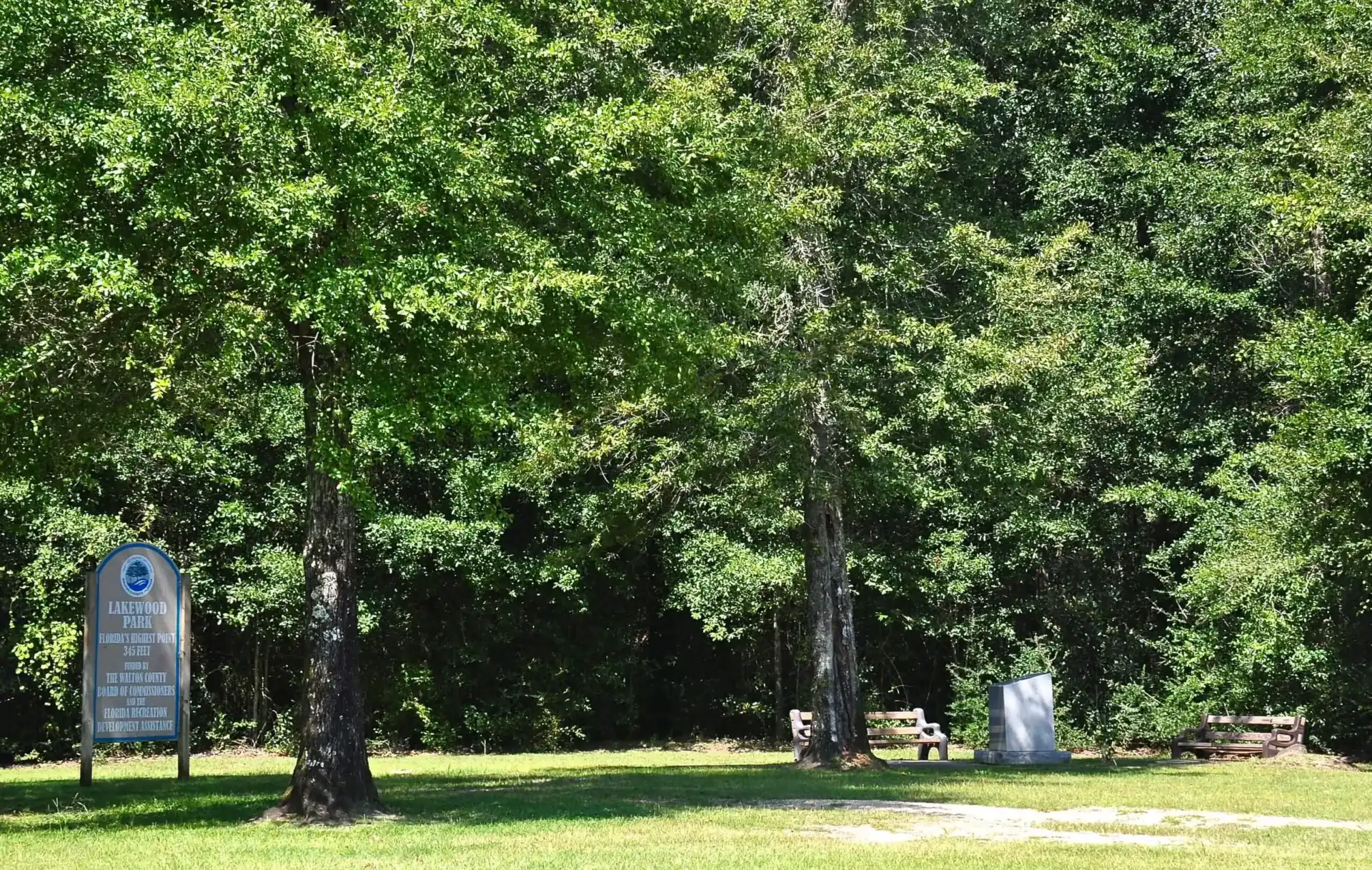
“The Sunshine State” is the only state that borders both the Gulf of Mexico and the Atlantic Ocean. It is primarily divided into three physiographic regions: the Atlantic Coastal Plain, the East Gulf Coastal Plain, and the Florida Uplands. The coastal plains feature sandy beaches, wetlands, and barrier islands along both the Atlantic Ocean and the Gulf of Mexico, supporting many remarkable ecosystems, including the famous Florida Keys.
It has the longest coastline in the contiguous United States, spanning approximately 1,350 miles (2,170 km), not including its many barrier islands.
This unique positioning creates a landscape of extraordinary diversity from the crystalline springs of North Central Florida to the mangrove mazes of the Everglades.
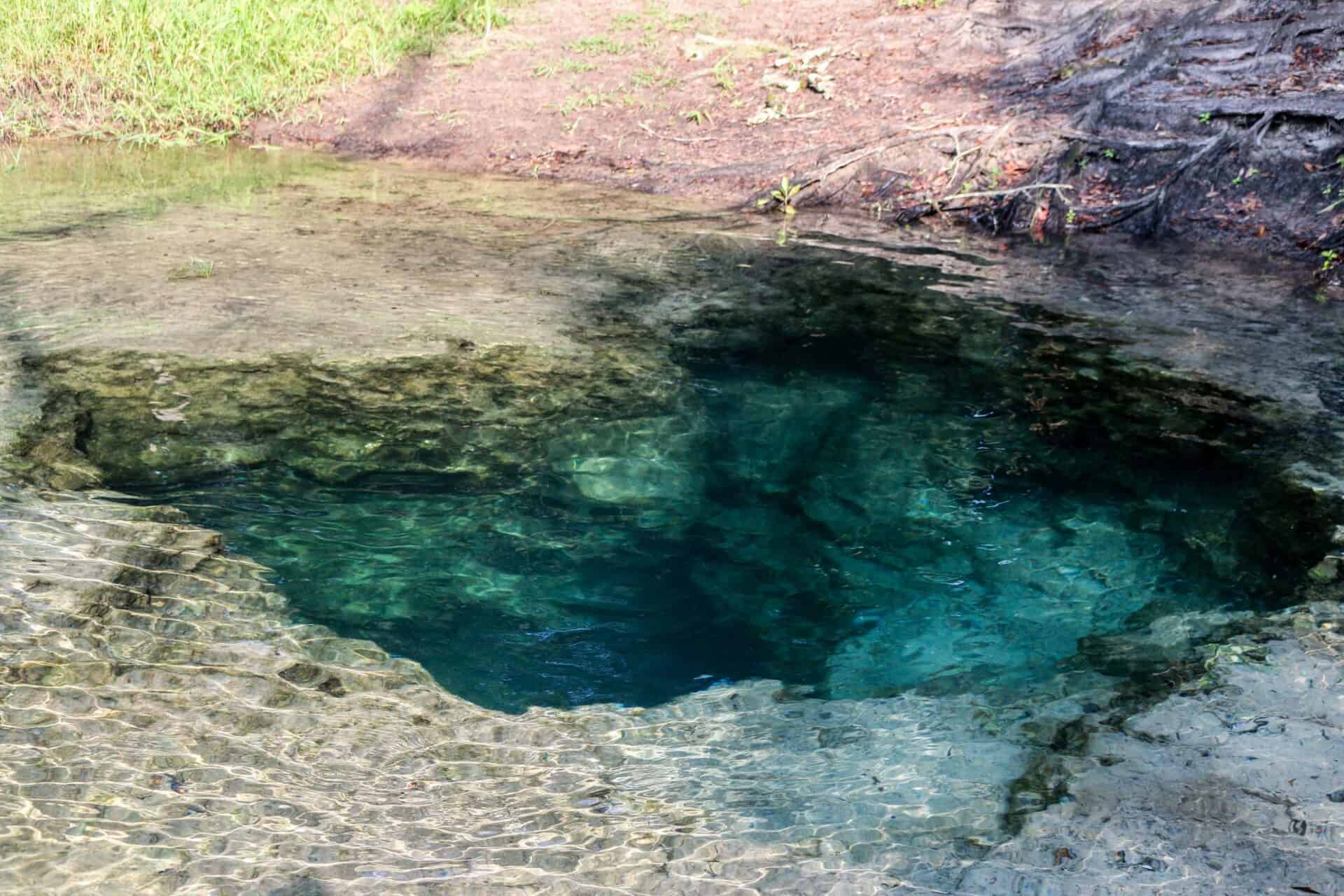
The USDA Hardiness Zones for the state range from Zone 8B (15°F to 20°F) in the extreme northwestern panhandle, to Zone 12A (50°F to 55°F) in the lower Florida Keys.
The Gulf Stream running through the Florida Straits and then north of the eastern Florida coast keeps temperatures moderate a few miles inland from around Stuart on the east coast to Fort Myers on the west coast of the state year-round, with few extremes in temperature. The tropical ocean current also provides warm sea surface temperatures, giving Florida beaches the warmest ocean surf waters on the United States mainland.
On average, Florida has the mildest winters in the continental United States. Average lows range from 65°F in Key West to nearly 41°F degrees in Tallahassee, while daytime highs range from 62°F in Tallahassee to 77°F in Miami.
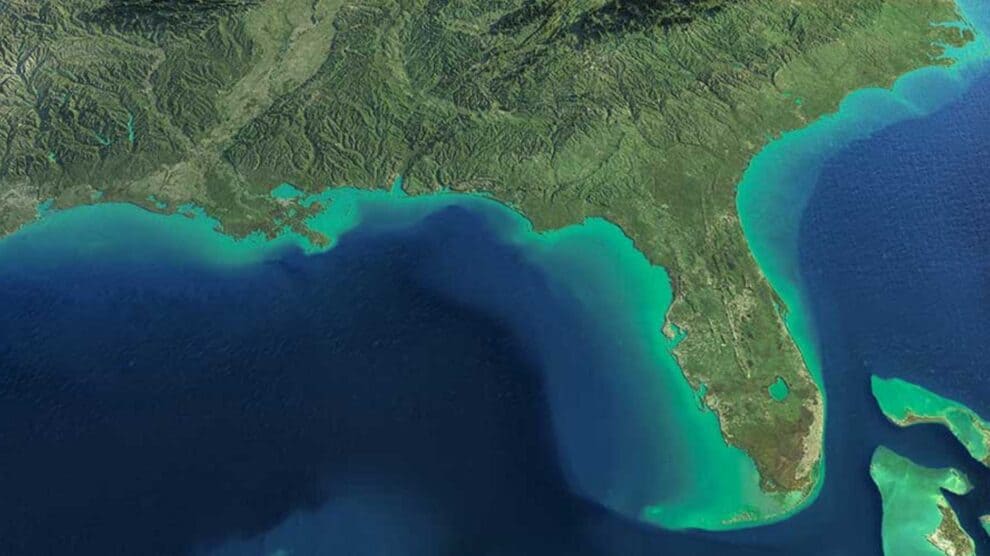
This climatic variation has shaped everything from agricultural patterns to settlement histories. Florida has experienced 12 major freezes that have fundamentally altered the state’s agricultural landscape, forcing citrus growers to shift operations southward time and again.
Historical Timeline & Key Events
The Indigenous peoples of Florida lived in what is now known as Florida for more than 12,000 years before the time of first contact with Europeans.
The two largest native groups were the Timucua and the Calusa. The Timucua lived in northern Florida and the Calusa in southern Florida.
Along the southwest Gulf coast lived the Calusa (Caloosa) Indians. A new tribe that entered Florida either from the islands or the north at the start of the Christian Era, the Calusa dominated South Florida with their statute, skills, and brutality. Mound Key, an island west of Fort Myers, was the center of this large Calusa Empire.

The European chapter began when Juan Ponce de León ventured to the peninsula in 1513 and 1521. Because he landed on the peninsula during the Easter season (Spanish: Pascua Florida [“Season of Flowers”]) and because of the vegetation he found there, Ponce de León named the area Florida.
Related content
Juan Ponce de Leon Route
St. Augustine FL
Born into Spanish nobility Ponce De Leon was a conquistador. He became the 1st Explorer to reach Florida in 1513....
Written records about life in Florida began with the arrival of the Spanish explorer and adventurer Juan Ponce de León in 1513. Sometime between April 2 and April 8, Ponce de León waded ashore on the northeast coast of Florida, possibly near present-day St. Augustine.
But Spanish colonization proved brutally difficult. In contrast with the conquistadors of Mexico or of Peru, the Spaniards in La Florida found no gold or silver. Due to disease and, later, raids by colonists of the Province of Carolina (chartered in 1663) and their Native American allies, the native population was not large enough for an encomienda system of forced agricultural labor, so Spain did not establish large plantations in Florida.
Further down the coast, in 1565 Pedro Menéndez de Avilés founded San Agustín (St. Augustine) which is the oldest continuously inhabited European settlement in any U.S. state. It is second oldest only to San Juan, Puerto Rico, in the United States’ current territory.
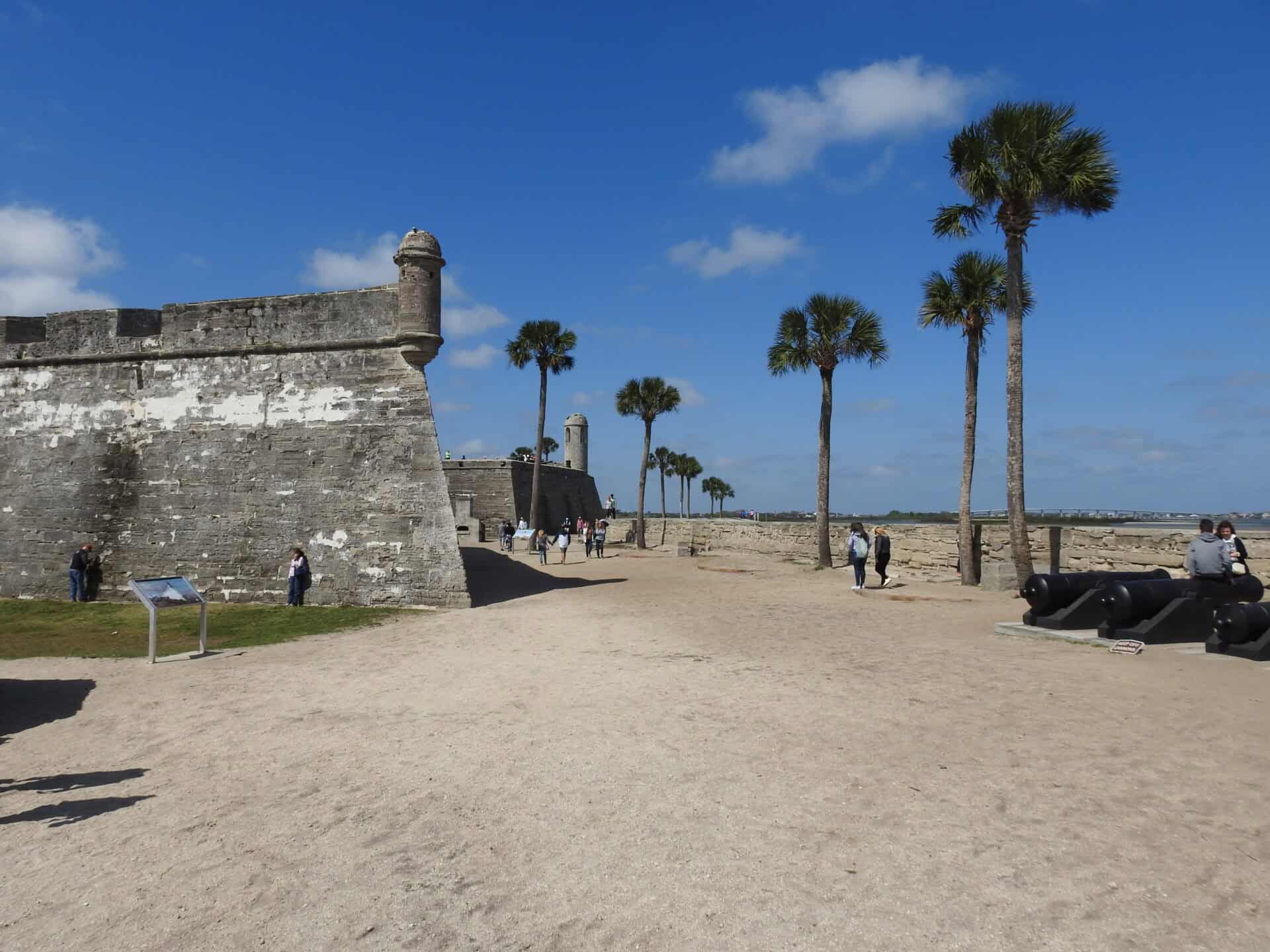
Spanish control of the Florida peninsula was much facilitated by the collapse of native cultures during the 17th century. Several Native American groups (including the Timucua, Calusa, Tequesta, Apalachee, Tocobaga, and the Ais people) had been long-established residents of Florida, and most resisted Spanish incursions onto their land. However, conflict with Spanish expeditions, raids by the Carolina colonists and their native allies, and (especially) diseases brought from Europe resulted in a drastic decline in the population of all the indigenous peoples of Florida, and large swaths of the peninsula were mostly uninhabited by the early 1700s.
The British period (1763-1783) marked a significant transformation. Life continued in sparsely populated Florida until 1763, when Spain gave the colony to Great Britain in exchange for Havana, which the British had recently captured. In 1784 Britain returned Florida to Spain.
During British rule, Florida remained loyal to the crown during the American Revolution, serving as a base for loyalist operations.
Florida was frequently attacked and coveted by Great Britain before Spain ceded it to the U.S. in 1819 in exchange for resolving the border dispute along the Sabine River in Spanish Texas. Florida was admitted as the 27th state on March 3, 1845, and was the principal location of the Seminole Wars (1816–1858), the longest and most extensive of the American Indian Wars.
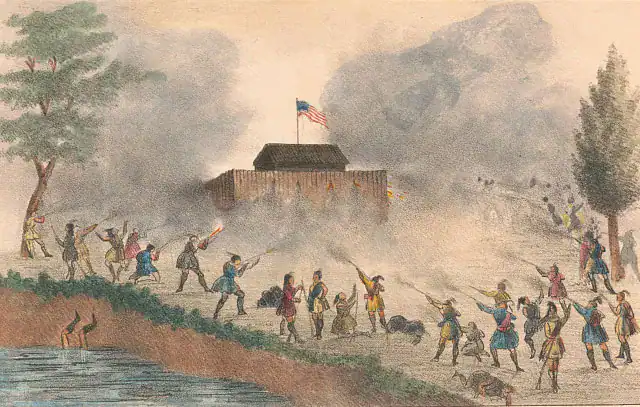
The Seminole were moved out of their rich farmland in northern Florida and confined to a large reservation in the interior of the Florida peninsula by the Treaty of Moultrie Creek (1823). Passage of the Indian Removal Act (1830) led to the Treaty of Payne’s Landing (1832), which called for the relocation of all Seminole to Indian Territory (now Oklahoma). Some resisted, leading to the Second Seminole War, the bloodiest war against Native Americans in United States history.
The state seceded from the Union on January 10, 1861, becoming one of the seven original Confederate States, and was readmitted to the Union after the Civil War on June 25, 1868.
The modern transformation began in earnest with Henry Flagler’s railroad empire in the late 19th century, which opened the state to tourism and development. In the early 20th century, land speculators discovered Florida, and businessmen such as Henry Plant and Henry Flagler developed railroad systems, which led people to move in, drawn by the weather and local economies.
Cultural Identity & Regional Character
The culture of Florida is often different in metropolitan areas than in more rural areas. Many parts of rural central and northern Florida are similar to the rest of American Southern culture, particularly around the Panhandle. In the larger cities such as Miami, Orlando, and Tampa, where there has been a large influx of people moving from other parts of the United States (mostly New York, New Jersey and Illinois), and even other areas of the world, the culture is much more diverse, and has been heavily influenced by Caribbean, Latin American, Jewish, and European culture.
We’re one better than a melting pot. Cultures don’t dissolve into one another here in Florida. They remain vibrant, creating a collage of ethnicity, with special emphasis on tropical latitudes and seaworthy heritage. And so it has become a land of fiery foods, sizzling music, salty temperament, colorful accents, striking architecture, and passionate arts.
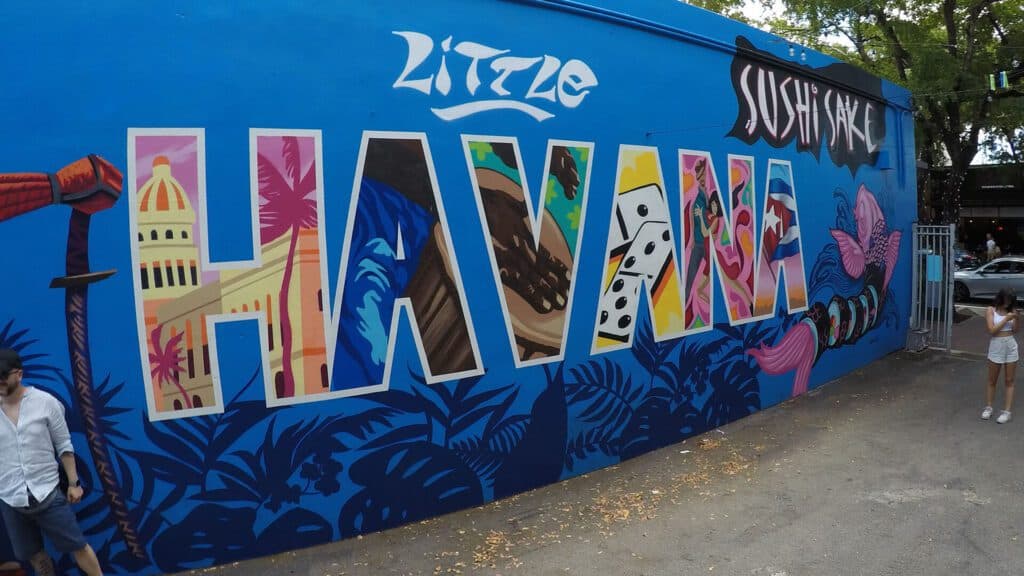
Florida is geographically in the south of the US, but many of its traditions do not align with typical southern customs. Only two northern regions are culturally connected to the common customs of the American South; The Panhandle and the Miami metro area. The rest of the state varies greatly from southern traditions.
The Florida Panhandle showcases a blend of Southern hospitality and coastal charm. People continue traditions influenced by neighboring states like Alabama, Georgia, and Mississippi. The Florida Panhandle stands out due to its unique blend of Southern traditions and coastal charm.
South Florida is the bottom-most region of Florida. Its history includes many immigrants adapting to its subtropical climate. Many of those who continue to immigrate to the region are from Caribbean parts of the world, such as Cuba and Haiti, making it the section most culturally connected to Caribbean culture.
Florida’s public education system identifies over 200 first languages other than English spoken in the homes of students. In 1990, the League of United Latin American Citizens (LULAC) won a class action lawsuit against the state Florida Department of Education that required educators to be trained in teaching English for Speakers of Other Languages (ESOL).
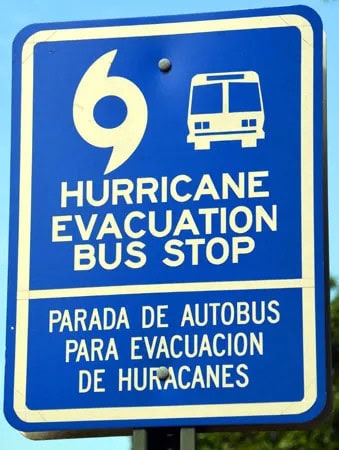
The sea profoundly shapes Florida’s character. The state’s close proximity to the ocean influences many aspects of Florida culture and daily life. Many people in Florida are avid boaters, surfers, and divers. Florida is home to more charter boat companies than any state in the United States.
What emerges from this cultural mixing is something uniquely Floridian: neither fully Southern nor Caribbean nor Midwestern, but a synthesis that has created its own distinct identity. It’s a culture that values both the laid-back coastal lifestyle and entrepreneurial innovation, traditional family values and progressive environmental policies.
Economy & Industry Evolution
The economy of the state of Florida is the fourth-largest in the United States, with a $1.705 trillion gross state product (GSP) as of 2024. If Florida were a sovereign nation (2024), it would rank as the world’s 15th-largest economy by nominal GDP according to the International Monetary Fund, ahead of Spain and behind South Korea.
Agriculture, tourism, industry, construction, international banking, biomedical and life sciences, healthcare research, simulation training, aerospace and defense, and commercial space travel contribute to the state’s economy.
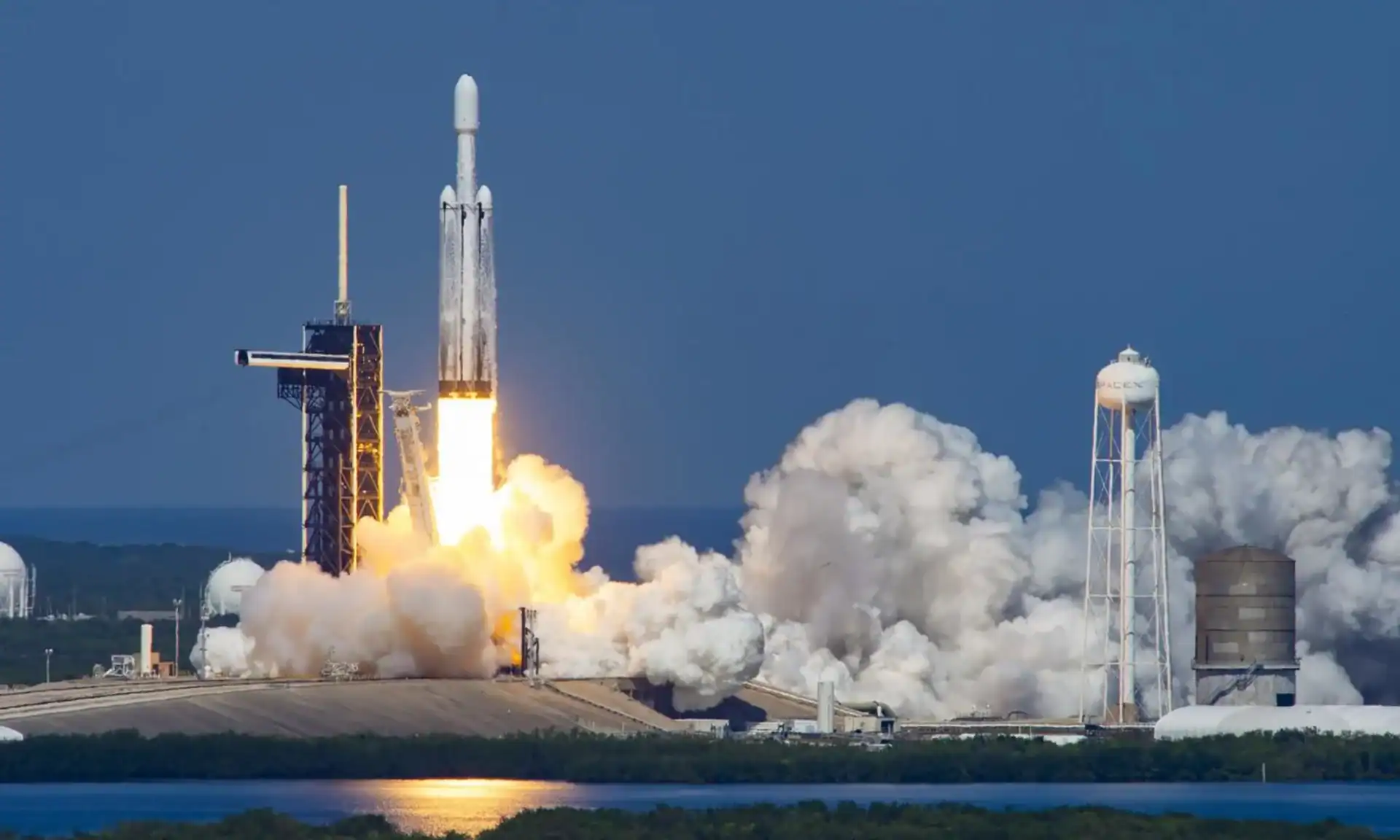
Related content
Uncover the Legacy of John Glenn at Cape Canaveral’s Iconic Kennedy Space Center
Cape Canaveral FL
If you’re traveling U.S. Route 1 through Florida, few stops are as awe-inspiring as Cape Canaveral, home to the Kennedy...
Tourism makes up one of the largest sectors of the state economy, with nearly 1.4 million people employed in the tourism industry in 2016 (a record for the state, surpassing the 1.2 million employment from 2015). In 2015, Florida broke the 100-million visitor mark for the first time in state history by hosting a record 105 million visitors.
The Walt Disney World Resort is the most visited vacation resort in the world with more than 58 million visitors annually, consisting of four theme parks, 27 themed resort hotels, nine non-Disney hotels, two water parks, four golf courses and other recreational venues. Other major theme parks in the area include Universal Orlando Resort, SeaWorld Orlando and Busch Gardens Tampa.
But Florida’s economic story extends far beyond tourism. Since the development of the federal NASA Merritt Island launch sites on Cape Canaveral (most notably Kennedy Space Center) in 1962, Florida has developed a sizable aerospace industry. Another major economic engine in Florida is the United States military. There are 24 military bases in the state, housing three Unified Combatant Commands; United States Central Command in Tampa, United States Southern Command in Doral, and United States Special Operations Command in Tampa.
Florida is a major exporter in the US. It is ranked the 8th biggest exporter accounting for approximately 3.5% of the total US exports in 2017. In 2017, the exports shipped from Florida were worth $55 billion. Florida’s geographical location conveniently makes it a gateway for merchandise trade between North America, Latin America, and the Caribbean.
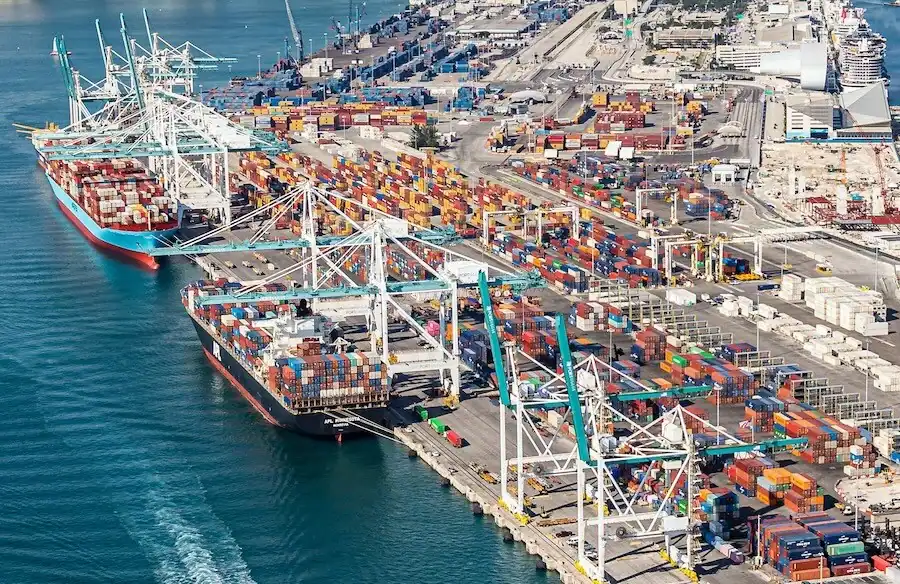
Agriculture remains fundamental to Florida’s identity and economy. The state leads the nation in citrus production, though the industry has faced significant challenges from hurricanes, diseases, and climate change. Citrus and strawberry production are major industries and the fruits are widely consumed, with strawberries seen as a winter and spring staple. Strawberry shortcake is especially popular with around 200,000 sold each year during the 11-day Florida Strawberry Festival.
The modern Florida economy increasingly emphasizes innovation and technology. Florida’s clean energy industry, which includes self-renewing energy sources such as solar, wind, water, gas, nuclear and bioenergy, comprises more than 11,000 clean energy companies. According to the U.S. Energy Information Administration, 5% of Florida’s total energy production currently comes from renewable resources with the majority coming from solar, which is really embarrassing for the “Sunshine State”! Top Florida clean energy companies include NextEra Energy, GE Wind Energy, and Algenol Biofuels.
Florida’s defense and homeland security industry, which encompasses the design, production and maintenance of military systems and security components used in protecting the U.S. is one of the nation’s largest. According to Enterprise Florida, the state’s economic development organization, Florida is home to 20 major military installations, 17,900 military and defense related companies with over 194,000 employees that contributes roughly $95 billion, or 9%, of Florida’s gross state product each year.
Politics & Governance
The state is dominated by Republicans on the state level, as Democrats have not held the governorship or either house of the legislature since 1999. Republicans currently have veto-proof majorities in both houses of the Florida legislature.
However, the state has become increasingly red since the late 2010s, as in 2018, Republicans captured both Senate seats in the state for the first time since Reconstruction. In 2020, Florida voted 7.8 points right of the nation as a whole, the furthest it has voted from the nation since 1988, and it was the first election since 1992 that Florida backed the losing candidate. In 2022, Republicans won their largest statewide victories since Reconstruction and neared 60% of the vote.
There is one constant in Florida politics: Its elections will be close. Slightly more than 15 million people lived in the state in 2000, when only 537 of Florida’s votes decided the presidential election.
Close to 22 million people will live in the state by 2026, and they’ve come from everywhere. Retirees from the Midwest, tax exiles from the Northeast, Puerto Ricans settling down in Orlando. None of it has altered the competitiveness of the state. Blue Florida has gotten bluer, with suburbanites moving away from the GOP; red Florida has gotten redder, with conservative Democrats who stayed with the party for decades finally making the switch.
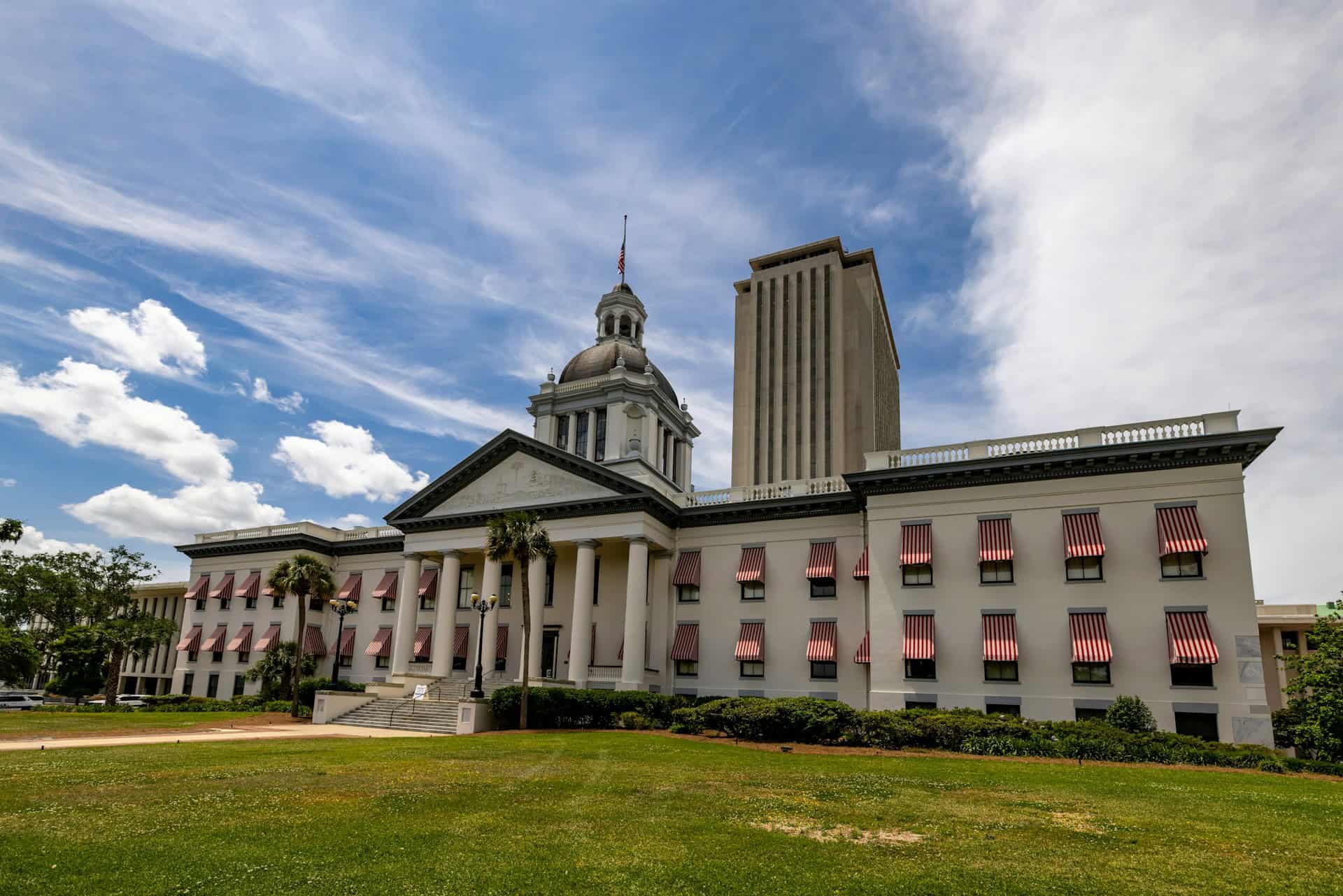
The state’s political character has bifurcated largely along geographic lines, with northern Florida voting overwhelmingly for Republican candidates and southern Florida tending to vote for Democrats, particularly in the populous Broward (Fort Lauderdale), Dade (Miami), and Palm Beach counties.
Although Hispanic voters have provided a strong base of support for the Democratic Party nationally, Cuban Americans, particularly those in Dade county, have voted in large numbers for the Republican Party.
It is often said that Florida’s politics have largely been “imported.” There is some truth to that statement. Two-thirds of Floridians were not born in the Sunshine State. One in five was born in a foreign country. Florida is now the nation’s third largest state. Its population growth in each decade since 1970 has been largely driven by the influx of people from other states and countries.
Fiscally, Florida operates under unique constraints and advantages. Florida is one of the nine states that do not impose a personal income tax, relying instead heavily on sales taxes and tourism revenues. Florida has a balanced budget provision, requiring the state not to have a budget deficit. The requirement for a balanced budget does not appear as such in the Florida Constitution. Article VII, Section 1(d), Florida Constitution, provides: “Provision shall be made by law for raising sufficient revenue to defray the expenses of the state for each fiscal period.” These two provisions, when read together, form the basis for the balanced annual budget requirement.
Florida’s state budget is funded one-third from General Revenue and two-thirds from hundreds of trust funds. The General Revenue portion of Florida’s state budget is funded primarily by sales tax, while local governments also have their own respective budgets funded primarily by property taxes.
Cities, Towns & Population Centers
The most populous cities in Florida are Jacksonville with 985,843, Miami at 455,924, Tampa with 403,364, Orlando at 320,742, and St. Petersburg with 263,553. With a population of over 23 million, it is the third-most populous state in the United States and ranks seventh in population density as of 2020.
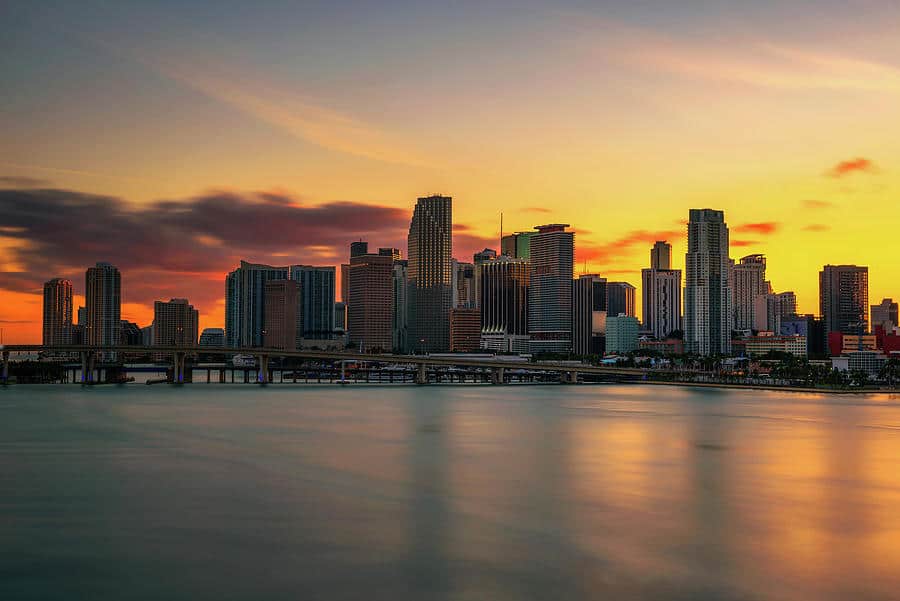
Florida’s urban development patterns reflect its unique geography and history. Unlike many states with a single dominant metropolitan area, Florida has developed multiple major urban centers: the Gold Coast corridor of Miami-Fort Lauderdale-West Palm Beach; the Tampa Bay area; Greater Orlando; and Jacksonville, each with distinct characteristics and economic specializations.
Miami-Dade represents Florida’s most international face, serving as what many consider the unofficial capital of Latin America. Another living museum of culture, Miami has welcomed peoples of many origins to its safe haven and land of opportunity, most notably Cuban refugees. Their influence is city-wide, mingling with other Latin and Caribbean cultures to create a spicy stew of arts. Along Calle Ocho, Eighth Street, so-called Little Havana’s main thoroughfare, salsa music, the slap of dominoes, and strong café con leche transport visitors to a different place, a different time.
Related content
Discover the Artistic Soul of Miami: Street Murals Across Dade County
Miami Beach FL
With a population of almost three million and a wide variety of ethnic groups, Street Art is throughout Dade County....
Tampa Bay anchors Florida’s west coast, combining traditional Southern charm with modern industry and urban sophistication. This region includes the counties around Tampa Bay on Florida’s Gulf Coast. It’s a large metropolitan area home to over three million people.
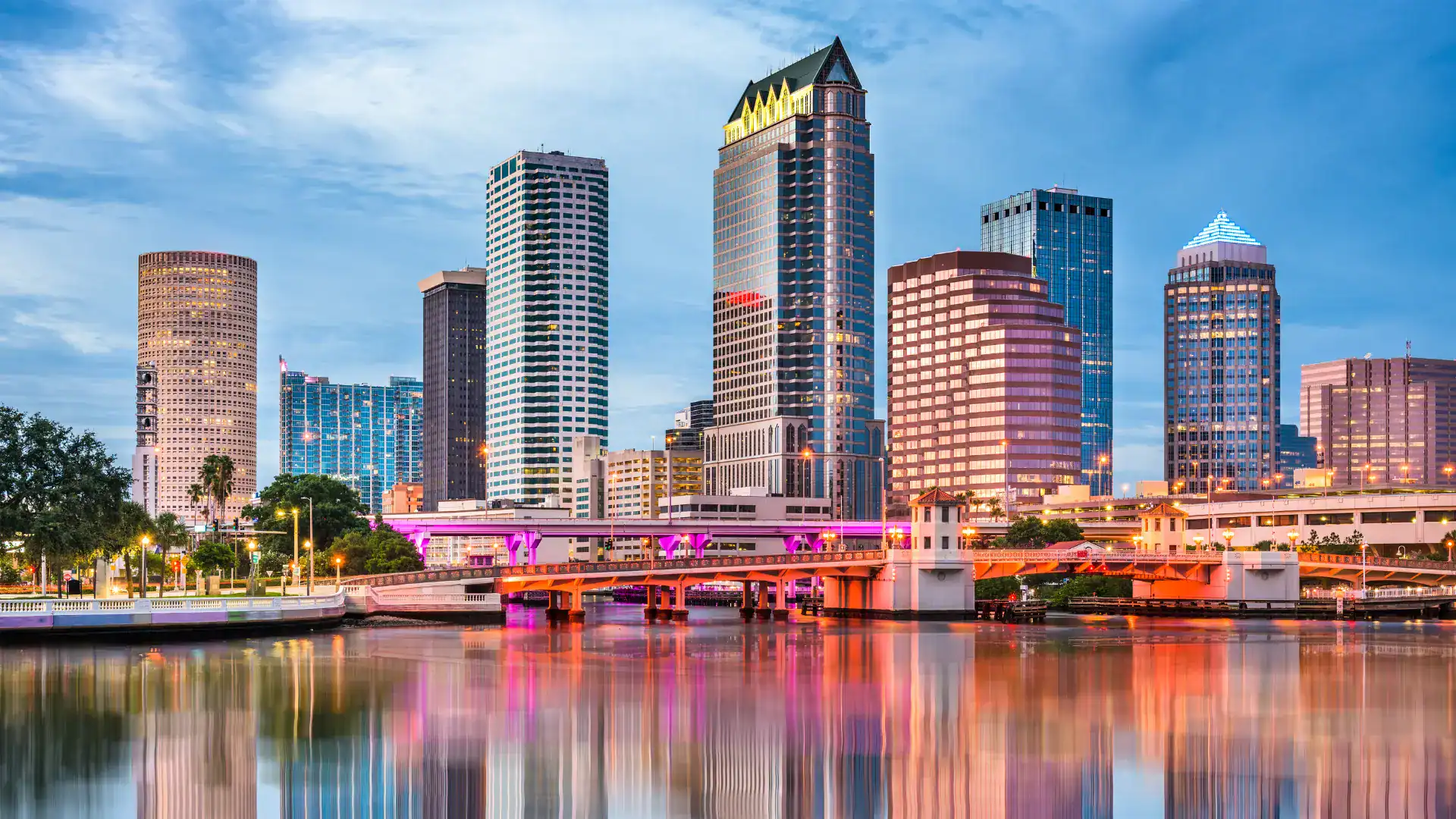
Orlando has evolved from a small citrus town into a global tourism capital. Central Florida is known for its hot, humid summers and mild winters. The strong tourism influences, several large colleges, and diverse population make Orlando distinct culturally in Florida, as it doesn’t identify as southern, northern, or Latin. Global influences abound across the city, making living here a multicultural experience.
Jacksonville stands apart as Florida’s largest city by area and population, serving as a major port and financial center. Culturally, northeast Florida is diverse within its boundaries. The St. Augustine era has a strong Spanish influence, while Jacksonville draws in commuters and locals from nearby Georgia. The small towns around the major cities have a southern flair and feel.
Arts, Literature & Creative Heritage
Florida literature is as varied as the state itself. Genres traditionally include fiction, nonfiction, and poetry, and some of it may be considered part of the American regional Southern literature genre. Writers affiliated with the locale of Florida include William Bartram, Elizabeth Bishop, James Branch Cabell, Hart Crane, Stephen Crane, Harry Crews, Nilo Cruz, John Fleming, Ernest Hemingway, Carl Hiaasen, Jay Hopler, Zora Neale Hurston, José Martí, Campbell McGrath, Marjorie Kinnan Rawlings, Wallace Stevens, and Harriet Beecher Stowe.
Ernest Hemingway’s connection to Key West alone has given Florida an outsized place in American literary history, but the state has produced and attracted writers across every genre and era. Zora Neale Hurston’s work in the Harlem Renaissance emerged from her Florida roots, while contemporary authors like Carl Hiaasen have made Florida’s unique blend of beauty and absurdity a literary trademark.
Related content
Hemingway "Cats in Key West"
Key West FL
Mile marker 0 marks the southern end of ” Route 1″ Come visit the famous Hemingway House. Other than author...

Florida is well endowed with a variety of cultural activities and institutions, a situation stemming partly from the importance of tourism and partly from the increasing leisure time available to its large number of retired residents. The state itself maintains hundreds of parks and other areas, many of historic or natural interest. Everglades National Park, established in 1980 (formerly a national monument that was designated a UNESCO World Heritage site in 1979), contains some 2,350 square miles (6,100 square km) in the heart of a unique natural region. Florida’s rich history is preserved in such places as St. Augustine, the country’s oldest town, portions of which have been restored; its famous 17th-century fort, Castillo de San Marcos, is a national monument.
Related content
Sarasota is a centre for both art and theatre. The city has developed into one of the nation’s premier cultural destinations, with institutions like the Ringling Museum of Art and a vibrant performing arts scene.
Among the numerous festivals that fill Florida’s cultural calendar are the Greek Orthodox Epiphany (Tarpon Springs; January), the Orange Bowl Festival (Miami; January), the Florida Citrus Festival (Winter Haven; January–February), the Strawberry Festival (Plant City; March), the Festival of States (St. Petersburg; March–April), the Arcadia Rodeo (Arcadia; March and July), and the Fiesta of Five Flags (Pensacola; May–June). The Gasparilla Pirate Fest, comparable to the Mardi Gras celebration in New Orleans, is held in Tampa in February, in association with the state fair.
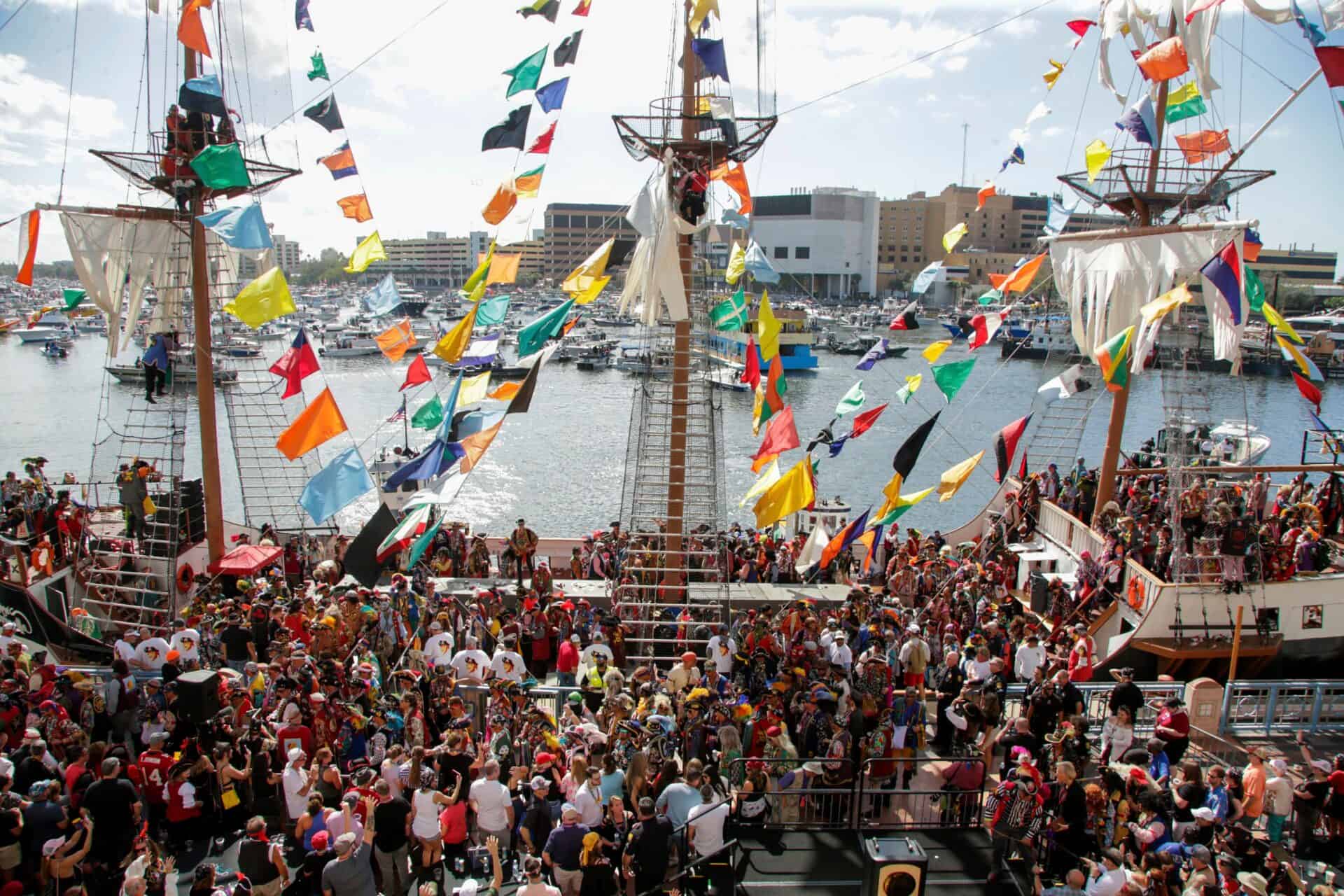
The influx of peoples from the Caribbean and Latin American has made their music a dominant force in South Florida’s musical culture. Conversely, many Latin and Caribbean musical styles have been altered through contact with American traditions. The types of music featured in South Florida’s Caribbean and Latin American clubs, radio, restaurants, religious events, community festivals and family gatherings include Jamaican reggae, Puerto Rican plena, salsa and jibaro, Cuban guajiro and charanga, Haitian compa, Trinidadian calypso and soca, Mexican musica nortena and mariachi.
The visual arts landscape includes everything from the street murals of Wynwood in Miami to the classical collections at the Ringling. Florida’s unique light and landscape have attracted artists for generations, creating a distinct school of Florida regionalism in painting and photography.
Related content
Fort Lauderdale Unveiled: Explore the Open-Air Gallery of Downtown Hollywood Murals
Fort Lauderdale FL
It all began in the Greater Fort Lauderdale area and with the Downtown Hollywood Florida Mural Project, as dozens of...
Architecture in Florida tells the story of cultural evolution and adaptation to climate. From the Moorish Revival buildings of the early 20th century to the Art Deco gems of Miami Beach to the cracker houses designed for subtropical living, Florida’s built environment reflects both practical needs and aesthetic aspirations.
Food Culture & Regional Cuisine
Southern Florida has been more influenced by infusions from the various cuisines of the Caribbean, South America, and Europe, compared to Northern Florida. However, the cuisine of the Southern United States is popular throughout the whole state.
The development of Florida cuisine has drawn on the cuisines of the southeastern United States, the Bahamas, Colombia, Spain, Cuba, and the rest of the Caribbean, as well as being influenced by national and worldwide trends. Florida attracts immigrants from places around the world as well, many of whom bring their native cuisine with them.
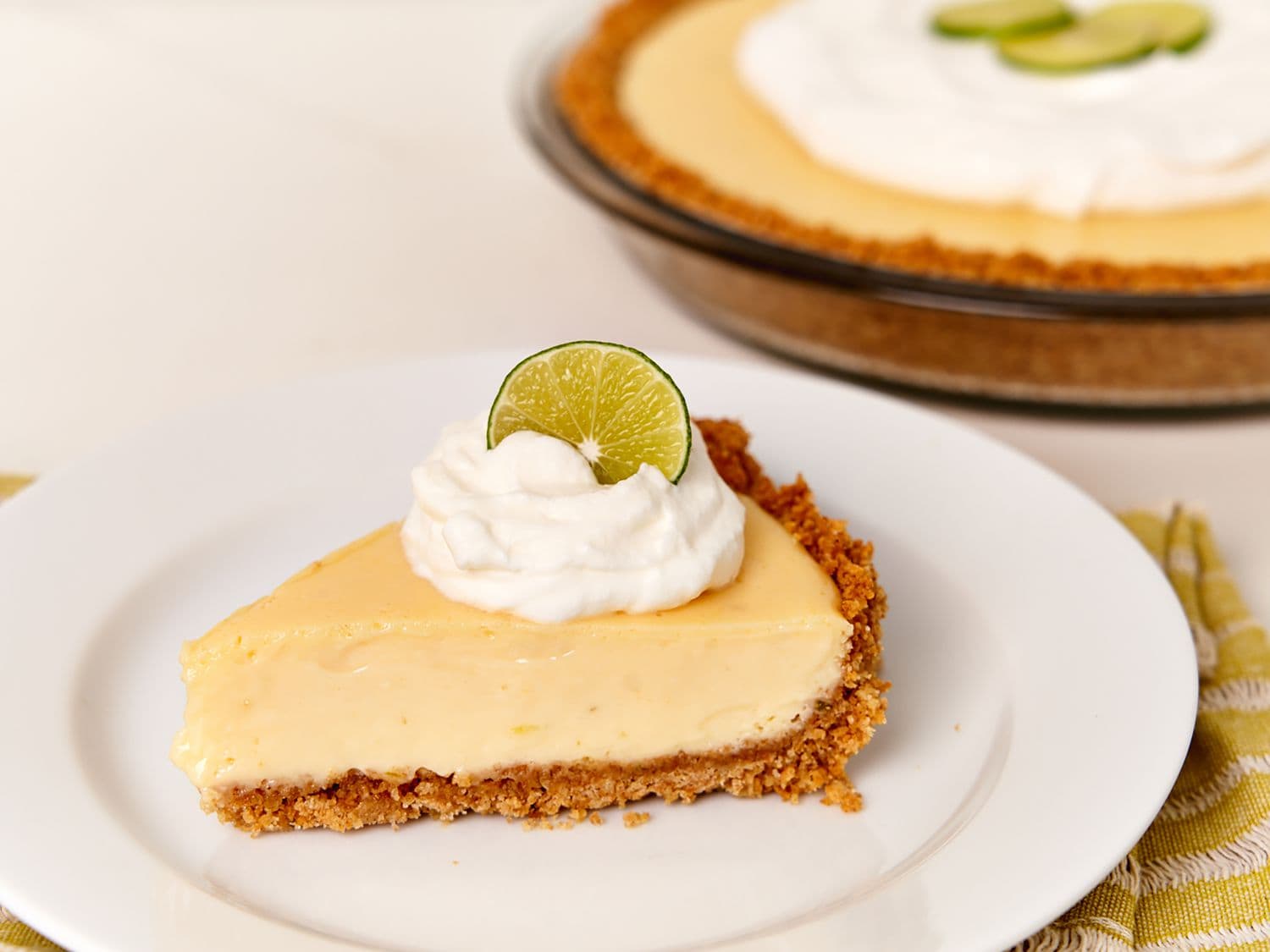
Florida’s food culture reflects its geography and immigrant populations. In South Florida, you’re as likely to find authentic ceviche as you are traditional barbecue. Tropical fruits are grown in South Florida and are widely used in Florida cuisine. Barbecue is especially popular throughout the state, where many barbecue competitions are held annually.
The signature dishes tell Florida’s story. Key lime pie, made from the tart limes that grow only in the Florida Keys, represents the state’s tropical identity. Stone crab claws celebrate the Gulf Coast’s seafood bounty. Cuban sandwiches in Tampa and Miami reflect the Cuban diaspora’s influence. Grouper sandwiches embody the fresh Gulf seafood tradition.
Related content
Gravity-Defying Shenanigans and Sweet Treats at the Key Lime Festival in Key West
Key West FL
It all began way down south in Key West in the late 1890s when William Curry’s cook Aunt Sally concocted...
Citrus and strawberry production are major industries and the fruits are widely consumed, with strawberries seen as a winter and spring staple. Strawberry shortcake is especially popular with around 200,000 sold each year during the 11-day Florida Strawberry Festival. Less conventional strawberry desserts such as strawberry pizza are enjoyed by tourists.
The state’s agricultural diversity allows for year-round farming, making Florida a major supplier of winter vegetables to the nation. From the sugarcane fields around Lake Okeechobee to the tropical fruit groves of South Florida, agriculture shapes both the landscape and the plate.
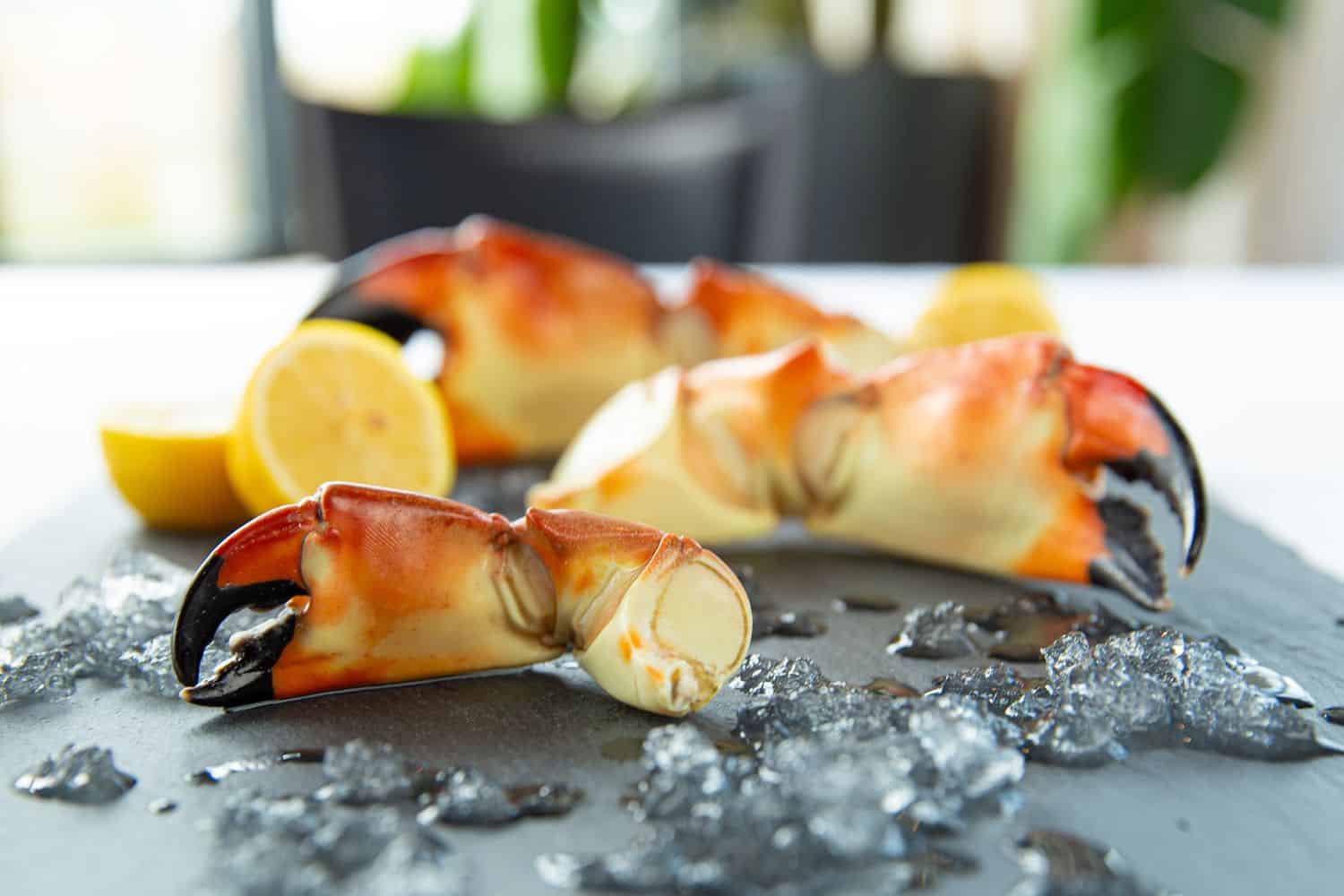
Regional specialties vary dramatically. In the Panhandle, Gulf oysters and mullet reflect deep Southern traditions. In Central Florida, catfish and alligator tail represent freshwater traditions. Along both coasts, grouper, snapper, and mahi-mahi dominate menus. The Keys offer spiny lobster and yellowtail snapper.
Craft brewing has exploded across Florida, with distinctive styles emerging that incorporate local ingredients, citrus-infused IPAs, Key lime wheat beers, and tropical fruit sours that capture Florida’s flavor profile in a glass.
Route 1: The State’s Eastern Thread
U.S. Highway 1 (US 1) in Florida runs 545 miles (877 km) along the state’s east coast from Key West to its crossing of the St. Marys River into Georgia north of Boulogne and south of Folkston. US 1 was designated through Florida when the U.S. Numbered Highway System was established in 1926. With the exception of Monroe County, the highway runs through the easternmost tier of counties in the state, connecting numerous towns and cities along its route, including nine county seats.
The US 1 stretches across 545 miles throughout the entire length of Florida along its eastern shore, from the northern border with Georgia to the southernmost tip of the continental U.S. in Key West. It was designated the first U.S. highway when the Numbered Highways System was rolled out in 1926.
At that point the coastal plain becomes so broad and flat that the fall line disappears and at Jacksonville, Florida the road follows the coast, now, to Key West. This historic route connects Florida to the original thirteen colonies, following ancient trade paths that have been traveled for centuries.
In northern Florida, the northern stint of the road (from Folkston, GA, to Melbourne, FL) spans roughly 250 miles of varying landscapes. Entering Florida from the north, US 1 carries you through wooded, rural farmland southeast toward Jacksonville. Passing the city, pine trees give way to Florida’s many swamps and waterways.
The road is a paradise for nature nuts, as it passes by or straight through several nature preserves that make for great camping, hiking, and fishing grounds. Historic plantations and other sites are also generously scattered throughout the ride, often smack-dab in the middle of delightfully dank swampland.
Related content
Elephant Herd Off Route 1 - Miami Beach
Miami Beach FL
Set against the shimmering Atlantic and South Beach’s iconic lifeguard towers, 100 elephants were stampeding onto Miami Beach. They’re not...
From its national southern terminus in Key West, US 1 carries the Overseas Highway, which is the Keys’s main highway, north to the mainland, entering South Florida. From South Florida to Jacksonville, US 1 runs close to the coastline of the Atlantic Ocean and the Intracoastal Waterway, generally east of Interstate 95 (I-95) and west of State Road A1A (SR A1A), running roughly parallel with both roads.
The most dramatic section is the famous Overseas Highway through the Florida Keys. The Overseas Highway is often called “The Highway That Goes To Sea. The southernmost leg of U.S. Highway 1 stretches 113 miles from Key Largo to Key West. Three years later, it was completely replaced by the Overseas Highway, utilizing the foundation that incorporated the rail tracks. The road incorporates an incredible 42 bridges in a series of giant arches of concrete and steel over the Atlantic Ocean, Florida Bay, and Gulf of Mexico. In 2009, the Keys highway was designated as our state’s first and only All-American Road by the US Federal Highway Administration.
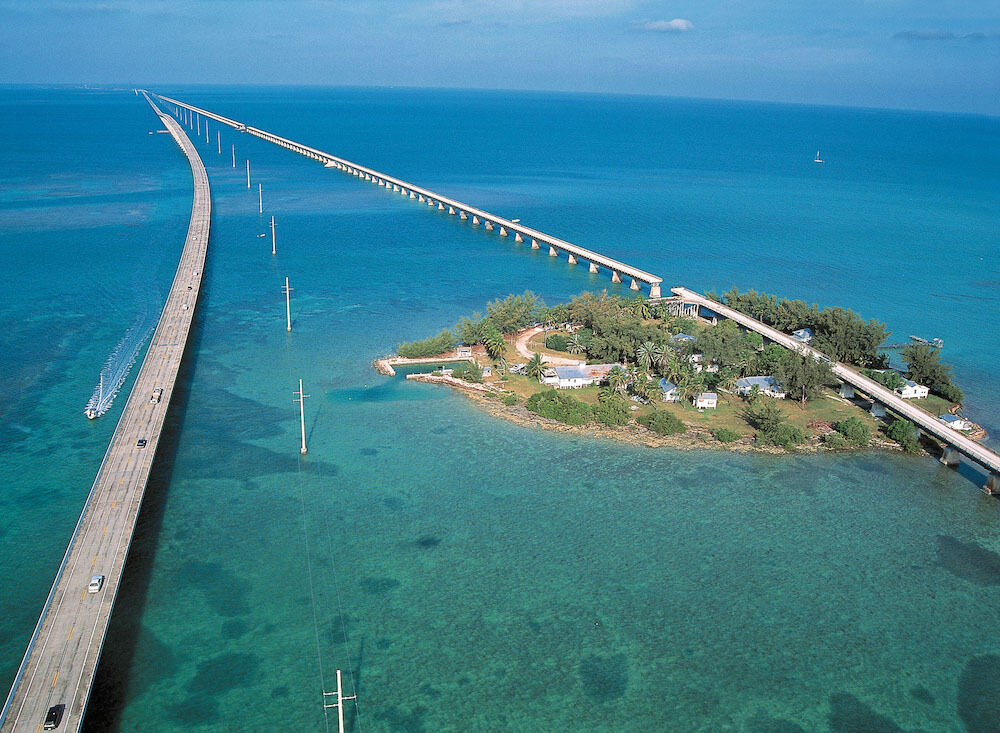
Along its length, Route 1 connects diverse communities: the historic charm of St. Augustine, the Space Coast’s technological innovation around Kennedy Space Center, the tropical resort atmosphere of the Keys, and countless small towns that represent authentic Florida living.
Related content
7 Mile Bridge From Marathon to Little Duck Key
Marathon FL
I’ve driven some long ones, including the Chesapeake Bay Bridge The San Mateo – Hayward Bridge and the Lake Pontchartrain...
Route 1 connects New York, Princeton and Philadelphia, the three cities at which the capital was established in the early years of the Republic, with Washington, the final choice; and it passes near or through nearly all of the Revolutionary battlefields and many of those of the Civil War.
In Florida, this historic thread continues the American story southward to the edge of the Caribbean.
Hidden Gems & Local Secrets
Visiting one of the secret spots and hidden gems in Florida will provide a whole new outlook on what the sunshine state has to offer. However, exploring something off the beaten path can be so much more rewarding. Florida is one of the largest states in the country and offers different landscapes and adventures you won’t see unless you search for them.
It’s best to listen to the locals who know where to find the best pubs, fish houses, hikes, and shops. From the Florida panhandle all the way down to the keys. These tucked-away places aren’t in the first chapter of your guidebook (and might not be in it at all) and that’s how many of us like it. These special spots may be hidden, but they are a favorite for year-round residents in Florida for good reason.
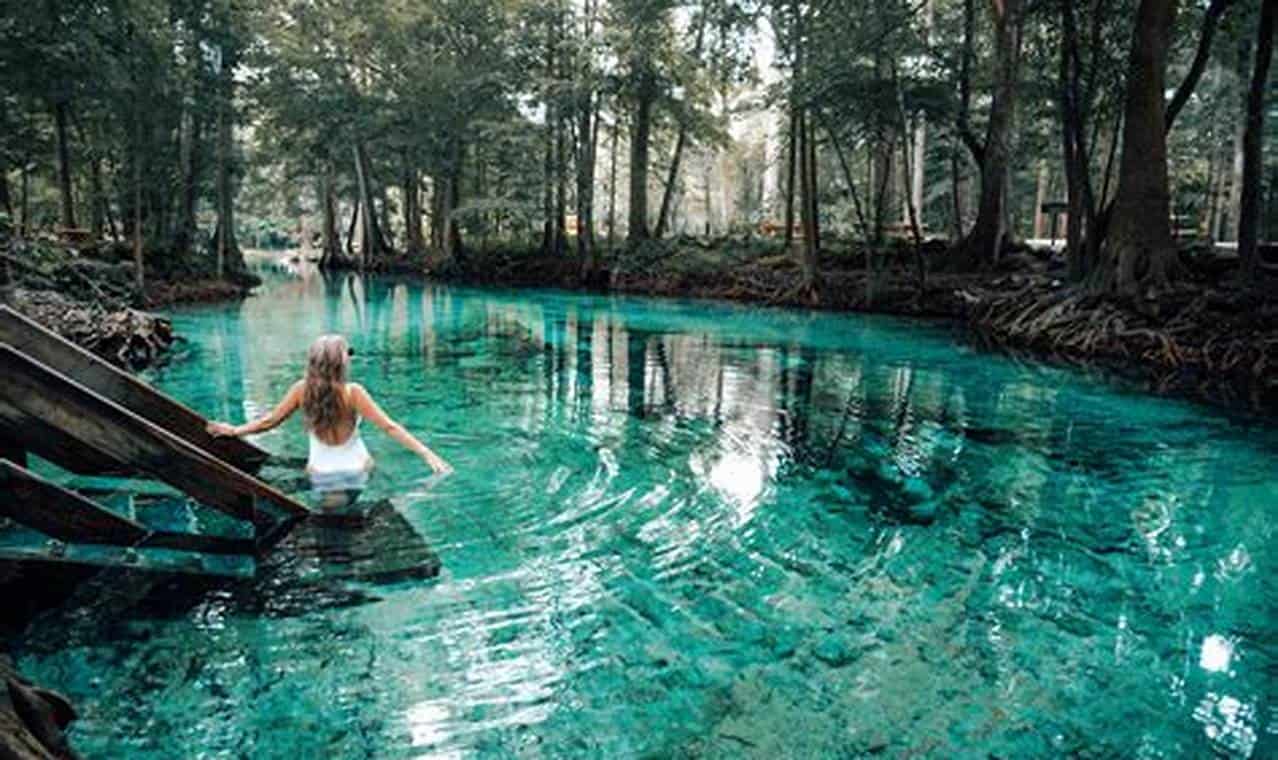
Devils Den Spring represents one of Florida’s most unique attractions. Another diver’s paradise, Devils Den is a unique experience in an absolutely stunning location and is literally a hidden gem in Florida. Located in Wilston FL, this privately owned prehistoric spring has a natural sunroof allowing the sunlight from above to filter into this underground river.
Located in Levy County, Devil’s Den Spring is a prehistoric natural spring inside a cave that offers diving and snorkeling in crystal clear, 72-degree waters all year long. Fossils dating back to the Pleistocene Age were found at this incredible site, which got its name from early settlers who thought the steam emanating from the underground space looked like smoke rising from hell.
The Kampong in Miami offers respite from urban intensity. Most of Miami has no idea that The Kampong secret garden exists (it’s camouflaged by layers of rare and exotic plants and guarded by a red gate) in the quirky Coconut Grove neighborhood on Biscayne Bay. Sprawling over 11 lush acres, towering palms and moss-draped oaks provide an umbrella to the former home of Dr. David Fairchild (1869-1954), one of the most famous horticulturists in history. As you explore the Asian-inspired main house, cottages, and grounds, you’ll take a step back into time and maybe even find a little Zen along the way.
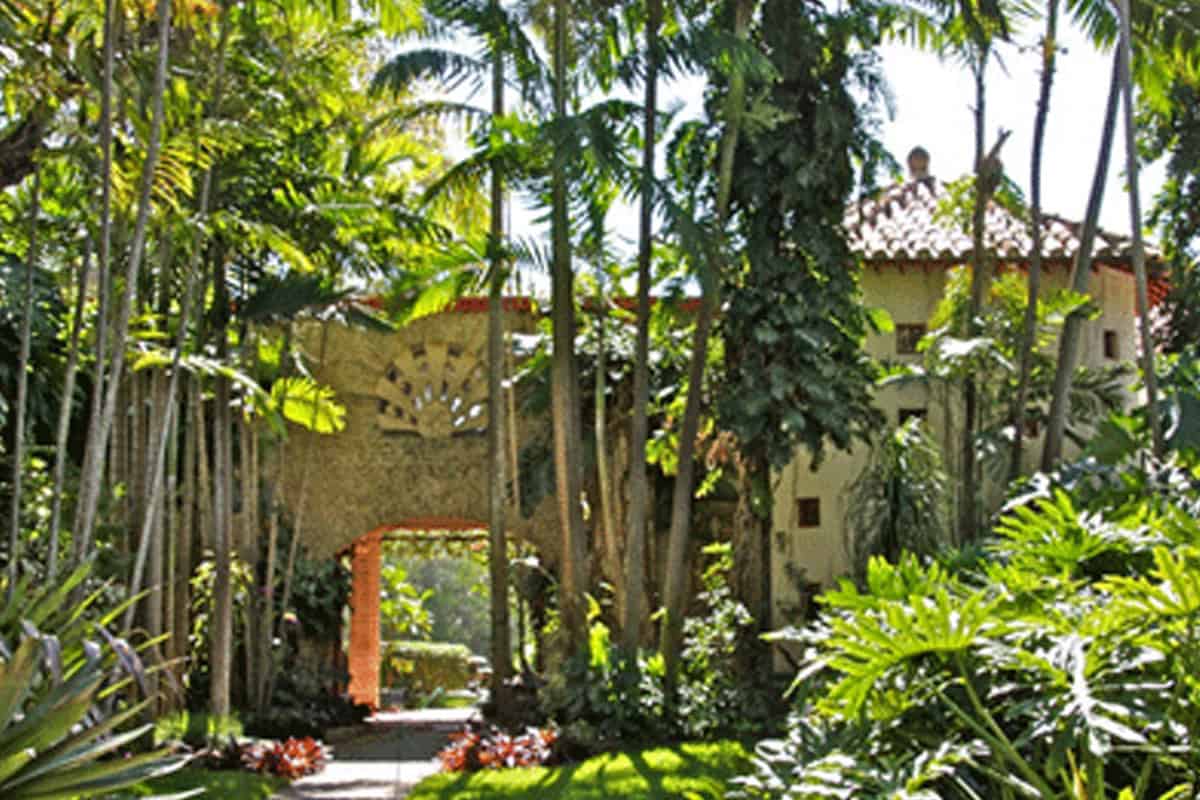
Cortez Historic Fishing Village preserves authentic Florida. Located on a little-known peninsula that juts off the coast of Bradenton, the Cortez Historic Fishing Village is where you’ll find one of the few remaining commercial fishing fleets on the waterfront in Florida. Head to a 1920s-era fish house called Star Fish Company where you’ll find a dockside, hole-in-the-wall-style eatery and market where the catch of the day was swimming just minutes before hitting your plate.
Dry Tortugas National Park remains Florida’s best-kept secret. One of the nation’s least-visited national parks, Dry Tortugas National Park is well worth visiting if you’re traveling to the Florida Keys. Although Dry Tortugas isn’t a secret to locals or national park lovers, its remote location means you can explore Fort Jefferson, snorkel among the coral reefs, or dive to a shipwreck without the crowds you might find on the Sunshine State’s other popular beaches. It is, after all, only accessible by boat or seaplane.
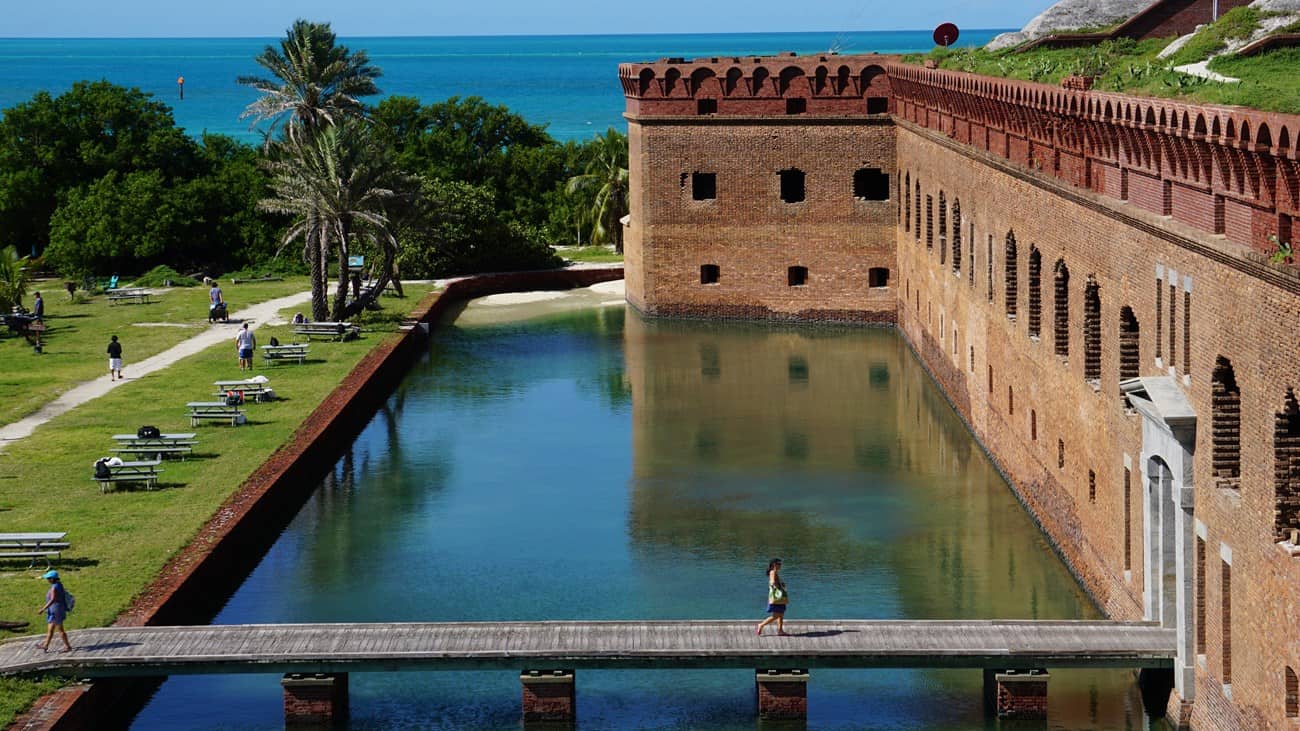
Chokoloskee Island in the Everglades offers authentic wilderness experience. In general, the Everglades is my top hidden gem in South Florida. Most Everglades visitors merely scratch the surface but it is easy to quickly get off the beaten path. Relatively few visitors make it to Everglades City and only a portion of those intrepid travelers cross the bridge to Chokoloskee. Do it! When you visit Chokoloskee, by all means eat at Havana Cafe (one of our favorite grouper sandwiches in Florida), visit Smallwood Store, and join an Everglades eco boat tour.
Morikami Museum and Japanese Gardens in Delray Beach showcases unexpected cultural heritage. This hidden oasis showcases the legacy of the Yamato Colony, a community of Japanese farmers who settled in the area in the early 1900s. As you wander through the 16 acres of meticulously manicured Japanese gardens, you’ll discover tranquil lakes, winding paths, and carefully crafted rock arrangements. The gardens are designed to represent different historical periods of Japanese gardening, offering a journey through time and space.
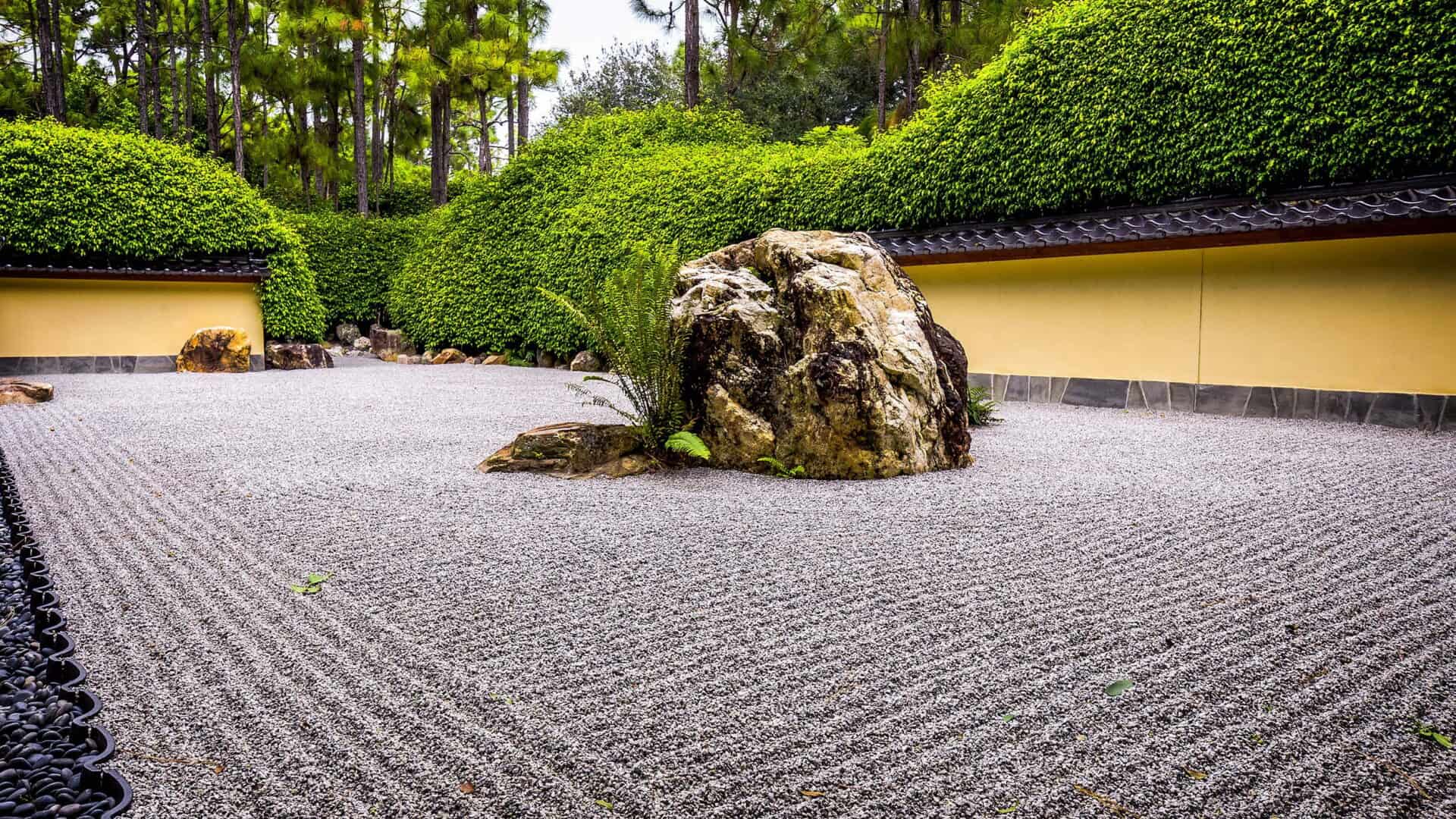
Molasses Reef off Key Largo provides world-class diving. Molasses Reef is located off the coast of Key Largo and can be accessed only by boat. Glass bottom boat tours are available for those who may not want to venture into the water, but still want to take in the beauty. This is an excellent spot for diving and snorkeling in the warm Florida waters. The marine life is abundant, so prepare to see everything from sea turtles to nurse sharks! Seeing the underwater ecosystem at work is mesmerizing and an unforgettable experience for the whole family.
These hidden gems represent the Florida that exists beyond the theme parks and resort beaches. A state of natural wonders, cultural surprises, and authentic experiences that reward the curious traveler.
Related content
Molasses Reef Lighthouse Key Largo
Key Largo FL
The story goes that a large barge being pulled by ship somehow ended up on the reef with a sticky...
Modern Challenges & Future Outlook
Florida’s geography also makes it vulnerable to the effects of climate change, both in the intensification of extreme weather such as intensified hurricanes as well as coastal flooding and other effects of sea level rise. Climate changes, natural disasters, and rising seawater are threats to Florida’s economy which primarily relies on tourism and agriculture.
The state faces unprecedented environmental challenges. Large sections of these states are extremely vulnerable to flooding and rising sea levels, and Florida’s average elevation of just 100 feet makes it particularly susceptible to sea level rise. The Everglades ecosystem faces ongoing threats from development, agricultural runoff, and changing water patterns.
Demographic pressures continue to mount. Florida’s population increases annually more rapidly than that of most states. Many people from other states retire in Florida. This helps drive home construction, infrastructure expansion, as well as the banking and financial planning industries.
This rapid growth strains infrastructure, water resources, and natural areas while dramatically changing community character.
The truth is that Florida’s three youngest generations, those ages 18-53 in 2018, now make up 52 percent of Florida’s registered voters, while the Baby Boomers, Silent Generation, and Greatest Generation comprise 48 percent. One explanation for this trend is that racial/ethnic minorities, particularly blacks, Hispanics, and multi-racial individuals, are younger than whites. Another is that Florida’s reputation as a “job magnet” and fun place to live has attracted a lot of younger residents from other states.

Economic diversification presents both opportunities and challenges. However, in the current global economy where technology and automation are becoming the backbone to every industry including tourism and agriculture, the state’s educational attainment remains lower than competitor regions and the national average. Diversifying Florida’s economy is key to creating jobs and opportunities. As we look toward 2030 and beyond, Florida must continue to attract growing and innovative industries and new technologies that will allow Florida to lead the way in high-skill, high-wage job creation. Florida wins when we continue to diversify our base of job creators and work to attract and grow targeted high-wage industries.
Water management remains critical. The state must balance the needs of agriculture, urban growth, environmental preservation, and tourism while managing limited freshwater resources and protecting both the Everglades and the aquifer systems that supply most of the state’s drinking water.
Political polarization reflects broader national trends but takes on unique dimensions in Florida’s diverse population. Since the start of the 21st century, Florida’s voting patterns have changed drastically with substantial impacts on the state. The Sunshine State has often been categorized as a battleground “swing state” by politicians and voters alike. Candidates for all types of office, presidential, senatorial and even gubernatorial, raise and spend large amounts of money, as the results of Florida elections are so unpredictable.
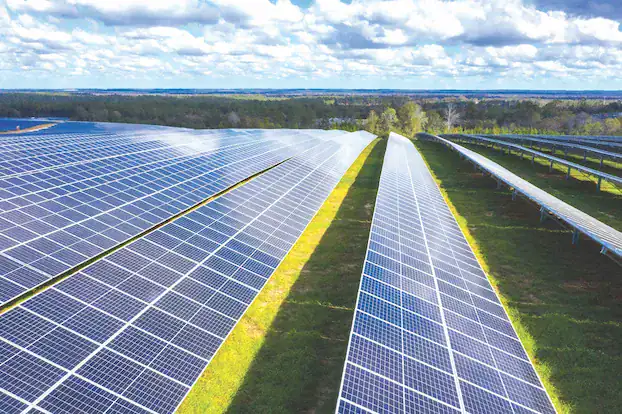
Yet Florida continues to innovate and adapt. The state leads in solar energy development, aerospace innovation, and marine science research. FPL’s “30-by-30” solar plan, battery storage facilities, EV adoption and EV infrastructure deployment efforts are making Florida a world leader in clean energy.
The Florida story is ultimately one of resilience and reinvention. From the Calusa builders of shell islands to the space program engineers, from the Seminole survivors to the modern environmental scientists, Floridians have consistently found ways to adapt to changing circumstances while preserving what makes the state unique.
Looking ahead, Florida’s success will depend on balancing growth with sustainability, embracing diversity while maintaining community, and protecting the natural systems that make the state so compelling while building the economy of the future. The state that has reinvented itself repeatedly throughout its history faces perhaps its greatest test and opportunity in the decades ahead.
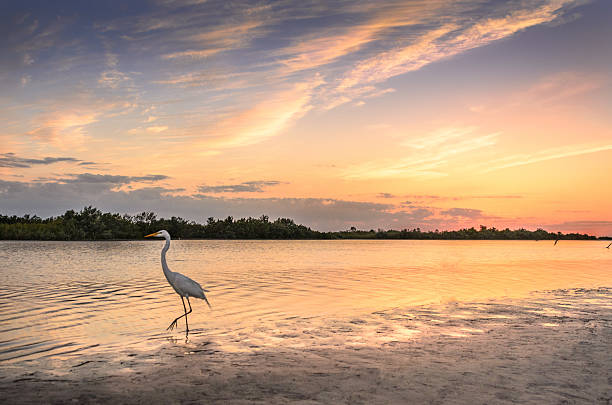
Florida remains what it has always been: America’s frontier, a place where the impossible becomes possible, where cultures blend and innovations emerge, where the past and future intersect under endless skies. Understanding Florida means understanding something essential about the American spirit. Our capacity to dream, adapt, and endure. In a state where you can watch a rocket launch in the morning and a manatee at sunset, where you can taste authentic Cuban coffee and Florida orange juice in the same meal, where you can walk on beaches that have witnessed five centuries of history, the future continues to write itself in the present tense.
For those who look beyond the surface, Florida reveals itself as endlessly fascinating: a place of profound beauty and occasional absurdity, of ancient wisdom and cutting-edge innovation, of natural wonder and human achievement. It is, simply, one of America’s most remarkable states, deserving of much deeper appreciation than it typically receives. In Florida, the journey of discovery never really ends.
